Animals Around the World Funny Names
Disclaimer: This post may contain affiliate links. All hosted affiliate links follow our editorial policies.
[Updated on February 9, 2022]
The world is a wild and wonderful place, filled with millions of cool animals most of us have never even heard of.
Growing up feeling like a bit of an odd bird myself, I've always been fascinated by strange animals and weird insects. I even studied ornithology and entomology in high school.
The Duck-billed Platypus and the Praying Mantis were both early childhood favorites of mine. Today we feel special affinity for weird looking animals such as the Pangolin and the Dugong, which we snorkeled with in Coron, Palawan .
Getting to see strange animals such as the Baird's Tapir (in Corcovado National Park ), Bushbaby (in Meru National Park ), Flightless Cormorant (in the Galapagos Islands ), and Hoatzin (in the Peruvian Amazon ) in the wild has been one of our favorite parts of traveling the world together.
If you're attracted to weird birds, unusual amphibians, and other cool creatures like we are, then you'll love our epic guide to 70 cool, strange, and weird animals around the world!
READ MORE: What is Ecotourism? (The History & Principles of Responsible Travel)
COOL & WEIRD ANIMALS GUIDE
- Strange Amphibians & Weird Reptiles
- Weird Birds
- Weird Creepy-Crawly Creatures
- Unique Mammals
- Unusual Nocturnal Animals
- Cool Animals from the Sea
STRANGE AMPHIBIANS & REPTILES
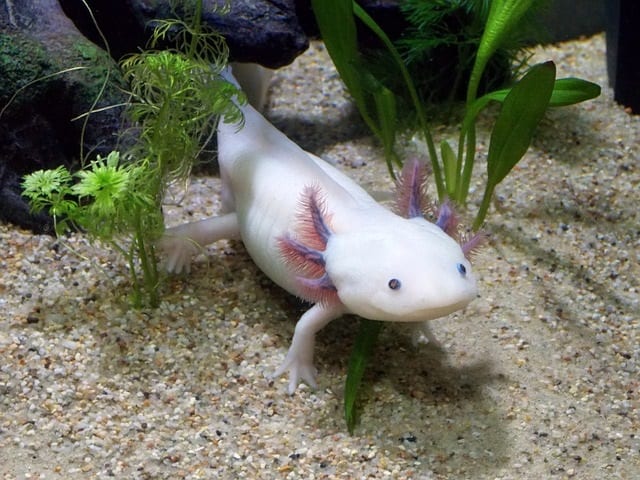
1. Axolotl
Latin Name: Ambystoma mexicanum
Habitat: Mexico's Lake Xochimilco and Lake Chalco
Size: Length: Up to 12 in; Weight: 2.11 to 8 oz
Diet: Trout, salmon pellets, bloodworms, earthworms, waxworms
Conservation Status: Critically Endangered, population decreasing
Also known as the Mexican Walking Fish, this amphibious salamander is critically endangered, and nearly went extinct in 2010.
They're weird animals because they don't go into metamorphosis like other salamanders: Even adults remain aquatic and gilled.
They're frequently used for research by scientists due to their ability to regenerate limbs.
Once a staple of the Aztec diet, they're now the focus of conservation efforts in Mexico City, where local NGOs are building "Axolotl shelters."
READ MORE:40 Fascinating Christmas Traditions in Mexico

2. Atretochoana
Latin Name: Atretochoana eiselti
Habitat: Brazil near the mouth of the Amazon and in the Madeira River
Size: Length: 2.4 feet; Weight: 1.76 to 3.52 oz
Diet: Small fish, worms
Conservation Status: Data Deficient
This odd amphibious species was first discovered on an expedition to the Brazilian rainforest in the late 1800s.
But most people had never heard of them until workers found six of these bizarre, eyeless creatures in 2011 while draining a portion of the Madeira River (a tributary of the Amazon) for a controversial hydroelectric project.
It's also known as the "penis snake," and it's easy to see why.
They're limbless, with snake-like bodies marked with earthworm-like rings, and heads that look like a portion of the male anatomy.
READ MORE: 20 Biggest Forests in the World (World Travel Bucket List)
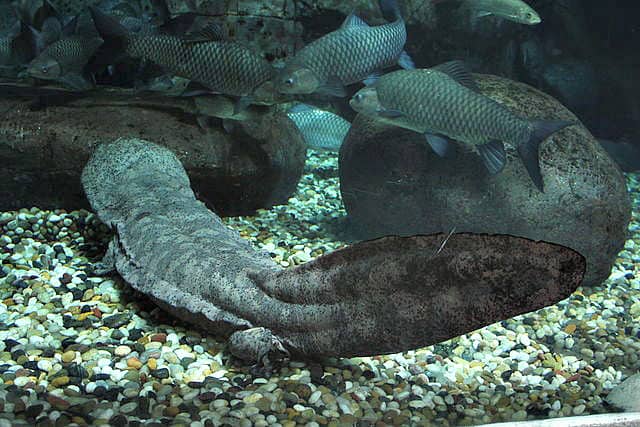
3. Chinese Giant Salamander
Latin Name: Andrias davidianus
Habitat: Rocky hill streams and lakes
Size: Length: Up to 5.9 feet; Weight: Up to 65 pounds
Diet: Insects, millipedes, horsehair worms, amphibians, fish, freshwater crabs
Conservation Status: Critically Endangered, population decreasing
The largest amphibian in the world, this critically endangered salamander can reach lengths of up to 5'9" and weigh up to 65 pounds.
Fully aquatic, they're primarily found in the rocky mountain streams and lakes of China but have been introduced in Japan and Taiwan.
They have crazy vocalizations– from barking and hissing to whining and crying– which has earned it the Chinese nickname "the infant fish."
Unfortunately, the Chinese also consider it a delicacy and use it in traditional medicine.
READ MORE: The Meaning of the Lorax (10 Eco-Lessons)
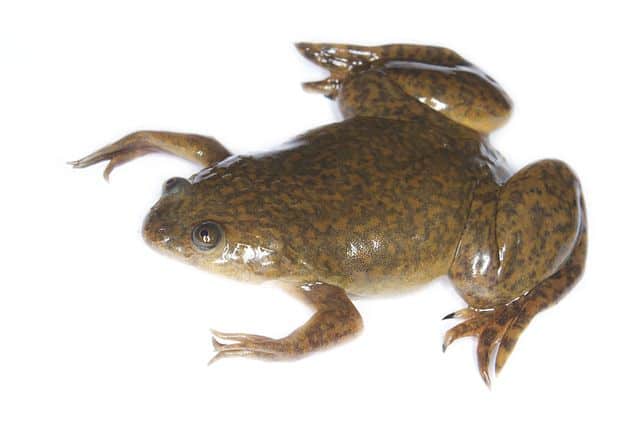
4. Clawed Frog
Latin Name: Xenopus laevis
Habitat: Grassland ponds, streams, and lakes in arid and semi-arid climates
Size: Length: 4 to 5 inches; Weight: 2 to 2.5 oz
Diet: Brine shrimp, shrimp pellets, waxworms, bloodworms, mealworms, insects, minnows
Conservation Status: Least Concern, population increasing
The Xenopus genus includes 20 species of aquatic frogs found in sub-Saharan Africa.
What makes them weird is the fact that they cannot hop, so they have to crawl long distances in order to get from one pond to another.
The frogs have eyes on top of their flattened heads, but no eyelids or eardrums. They also cannot move their tongue, so they use small fore limbs to help during feeding.
When the lakes, ponds, and potholes they tend to favor dry up, the frogs may lie dormant for a year awaiting rain.
READ MORE: 20 Largest Lakes in the World (by Continent)

5. Eastern Long-Necked Turtle
Latin Name: Chelodina longicollis
Habitat: Wetland and swampy areas, streams rivers; common in eastern Australia
Size: Length: 9.84 in to 11 in; Weight: 15.6 to 28.7 oz
Diet: Fish, crustaceans, mollusks, amphibians, worms, insects
Conservation Status: Data deficient
Like a reptilian giraffe , this aptly-named turtle (commonly found in eastern Australia) has a snake-like neck that's almost as long as its entire carapace.
Rather than retracting its head back inside as you might expect, this "side-necked turtle" bends it sideways into its shell.
When threatened, the Eastern Long-neck will emit a terribly noxious odor from its musk glands, which has also earned it the nickname "The Stinker."
READ MORE:20 Weird & Cute Australian Animals
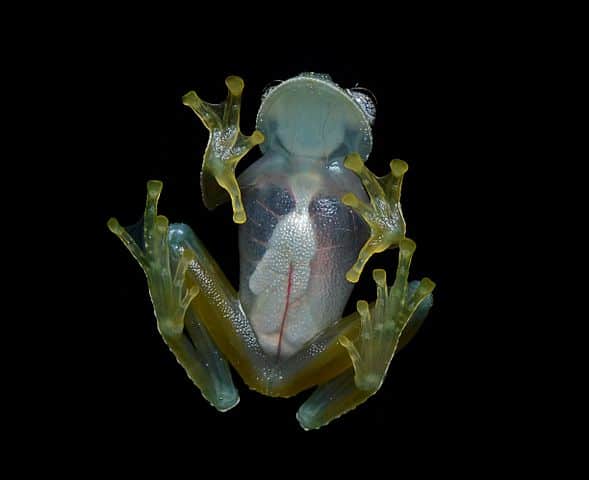
6. Glass Frogs
Latin Name: Centrolenidae
Habitat: Tropical rainforests
Size: Length: 0.78 to 3 in
Diet: Insects, spiders
Conservation Status: Least Concern
Commonly known as Glass Frogs, members of the amphibian family Centrolenidae all share a similar small size and lime green background colors.
What makes them strange animals is the fact that certain species have translucent abdominal skin that allows you to see their insides.
This includes their heart, liver, gastrointestinal tract, and (in the case of females) eggs!
It's also a helpful feature for escaping predators, since the frogs are primarily active at night.
READ MORE:The 15 Best Kauai Waterfalls
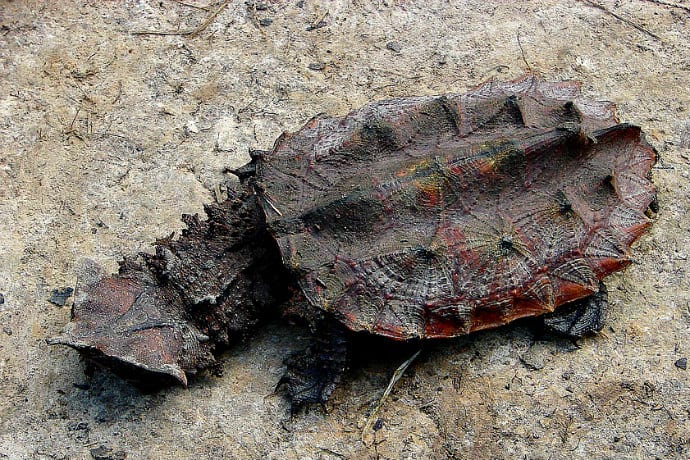
7. Mata Mata Turtle
Latin Name: Chelus fimbriata
Habitat: Streams and swamps in the Amazon and Orinoco basins
Size: Length: Up to 18 in; Weight: 30 pounds
Diet: Fish, frogs, insects
Conservation Status: Near Threatened
This South American freshwater turtle is found in the Amazon and Orinoco basins, primarily in slow-moving streams and swamps where it can stand in shallow water and stretch its nose to the surface to breathe.
It's an unusual, ancient-looking creature that's clearly made for camouflage.
It has a horny snout and flattened, triangle-shaped head that looks like fallen leaves, and a brown/black shell said to resemble bark.
Measuring up to 18 inches long and weighing some 30 pounds, it's a large, trippy-looking turtle!
READ MORE:Top 15 Female Wildlife Conservationists & Animal Rights Activites
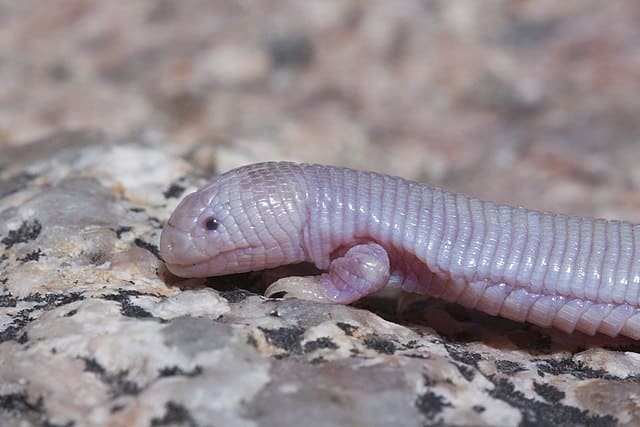
8. Mexican Mole Lizard
Latin Name: Bipes biporus
Habitat: Mexico's Baja California region
Size: Length: 7.1 to 9.4 in; Weight: 3 oz
Diet: Ants, termites, insects, larvae, earthworms
Conservation Status: Least Concern, population stable
These bizarre animals, which are also commonly known as the 5-Toed Worm Lizard, are endemic to Mexico's Baja California region.
Measuring up to 9.4 inches long, it looks like a freaky hybrid– part earthworm, part mole, part salamander.
It's got a blunt head; a slender, ribbed, pink body; and two tiny forelimbs that it uses to dig underground.
They live there, close to the surface, and only emerge at night or after heavy rains.
READ MORE: The 20 Best Festivals in the World for Your World Travel Bucket List

9. Spike-Nosed Tree Frog
Latin Name: Litoria pinocchio
Habitat: Rainforest of the Foja mountains of Indonesia
Size: Spike: 2.5 mm
Diet: Insects
Conservation Status: Data Deficient
Colloquially known as the "Pinocchio Frog," this unusual animal was discovered during a Conservation International and National Geographic Society expedition to Indonesian New Guinea in 2008.
Its nickname comes from the fact that the tree frog's elongated nose grows rigid and erect when he's calling out to prospective mates, but otherwise remains limp and deflated.
Not much else is known about the species, other than the fact that it lives in the rainforest of the Foja Mountains .
READ MORE:How to Avoid Products with Palm Oil
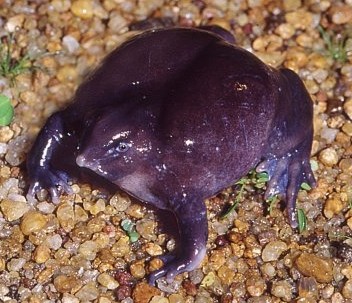
10. Purple Frog
Latin Name: Nasikabatrachus sahyadrensis
Habitat: India's Western Ghats
Size: Length: 6 to 9 cm; Weight: 5 to 6 oz
Diet: Termites
Conservation Status: Endangered
Also known as the Indian Purple Frog or Pignose Frog, this grape-colored goliath looks like Grimace (if he was a fat frog with a small head and a pointy snout).
Endemic to India's Western Ghats, the endangered frog's proboscis is designed to help it feed on its favorite food, termites.
They spend the majority of their time underground: They only surface to breed once a year, for two weeks during India's monsoon season.
A breeding pair will lay up to 3,000 eggs annually in rocks along streams, then head back underground again.
READ MORE: Indian Animals: A Guide to 40 Incredible Indian Wildlife Species

11. Indian Gharial
Latin Name: Gavialis gangeticus
Habitat: Freshwater rivers, sandbanks
Size: Length: 8.9 to 16 feet; Weight: 350 to 550 pounds
Diet: Fish, Insects, crustaceans, frogs
Conservation Status: Critically Endangered, population increasing
Another unusual animal in India , the Alligator-like Gharial is notable for its long, narrow snout and a bizarre grin comprised of nearly 100 teeth.
These critically endangered reptiles can grow up to 15 feet long and weigh nearly 2,000 pounds.
Once ranging all across South Asia, there are currently less than 1,000 left in the wild. These days they can only be found along rivers in India and Nepal.
What makes these unique animals different from other crocodilians is that, instead of having to stalk their next meal, they can locate prey by picking up vibrations in the water through sensory cells in their sensational snouts.
READ MORE: The 15 Best Places to Visit in India for Nature Lovers
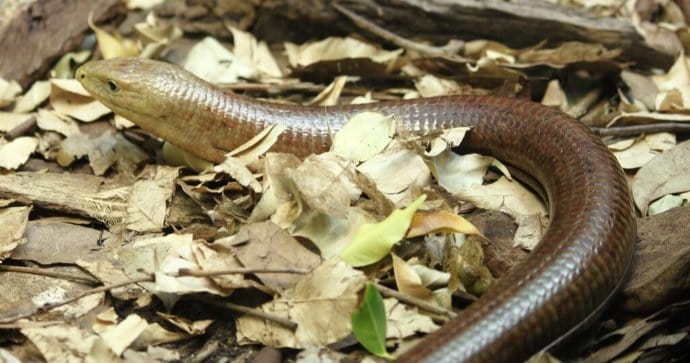
12. European Legless Lizard
Latin Name:Pseudopus apodus
Habitat:Wooded areas in southern Europe, the Balkans, southern Crimean coast, Black Sea coast, & central Asia
Size:Length: 2 to 3 feet; Weight: 7.05 to 14.10 oz
Diet:Crickets, mealworms, waxworms, cockroach nymphs
Conservation Status:Data deficient
Also known as the Scheltopusik or Palla's Glass Lizard, the European Legless Lizard is found throughout Eastern Europe and Central Asia.
Their nickname comes from an age-old myth that they would shatter like glass if bothered. Strangely enough, this old wives' tale is partially true!
These lizards are one of the few strange animals that uses caudal autotomy, and will break off their tail in an act of self-defense if they feel threatened.
European Legless Lizards are often mistaken for snakes, due to their lack of legs and ability to reach up to 4 feet in length.
In fact, they so closely resemble snakes that they were used in the snake pit scene in the classic adventure film, Indiana Jones & theRaiders of the Lost Ark.
READ MORE: 40 Fascinating Facts About the Amur Leopard
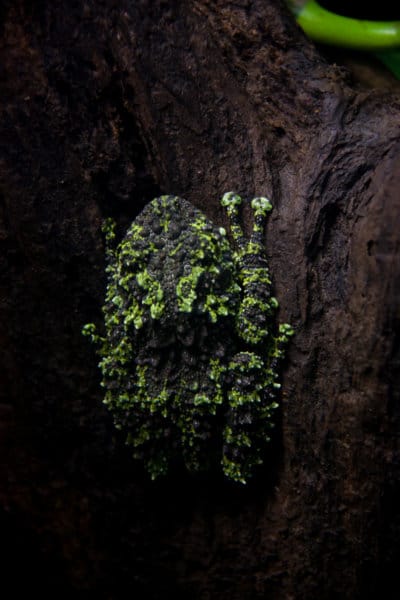
13. Vietnamese Mossy Frog
Latin Name:Theloderma corticale
Habitat: Cliffs and rainforests in northern Vietnam
Size:Length: 2.5 to 3.5 in
Diet:Crickets, cockroaches, earthworms
Conservation Status:Least Concern, population decreasing
These weird looking animals appear just as their name would suggest– mossy. They're verdant green with black spots, and their skin is covered in tubercles and spines.
Found mostly in northern Vietnam, this semi-aquatic amphibian species spends most of its time in the water, laying on rock crevices where they're nearly indistinguishable from moss itself.
This sort of camouflage comes in handy when they're threatened. As does their ability to throw their voices up to 13 feet to confuse their predators!
READ MORE: 40 Fascinating Facts About the Saola (a.k.a Asian Unicorn)
WEIRD BIRDS
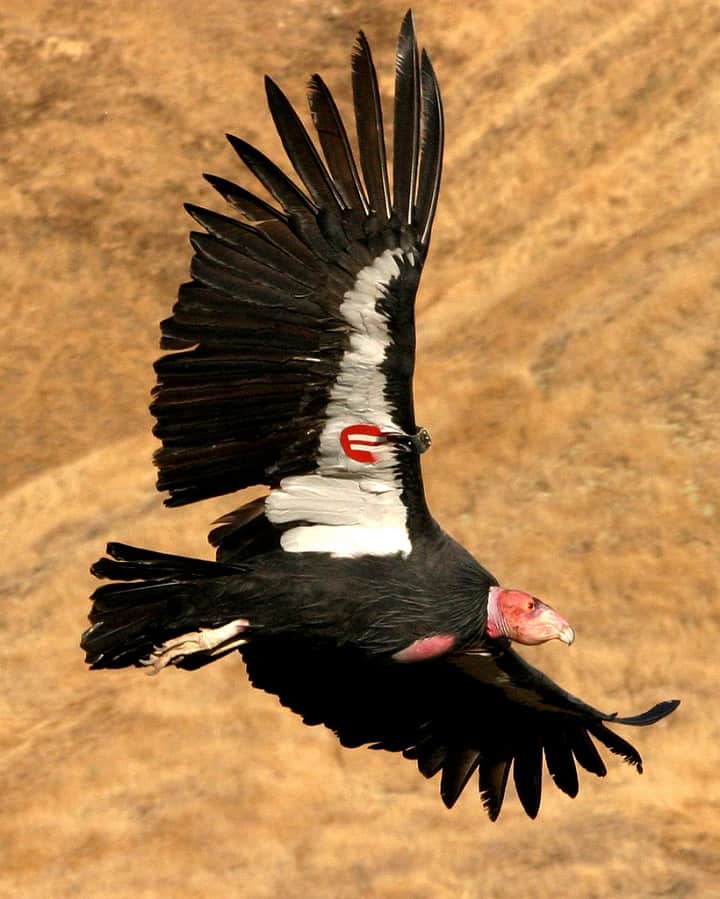
14. California Condor
Latin Name:Gymnogyps californianus
Habitat:Rocky shrubland, coniferous forests, oak savannas
Size:Length: 43 to 55 in; Weight: 20 to 24 pounds
Diet:Dead animal carcasses
Conservation Status:Critically Endangered, population increasing
The largest land bird in North America, the odd-looking California Condor won't be winning any beauty contests anytime soon.
But what makes this critically endangered scavenger one of the world's weirdest birds is its size.
Ranging in length from 43 to 55 inches and weighing 15 to 31 pounds, their massive wingspan of 8 to 10 feet has had them confused with small airplanes on more than one occasion.
These animals are cool. They've also got some impressive skills, such as soaring for more than three miles without flapping their wings.
READ MORE: List of National Parks in America by State
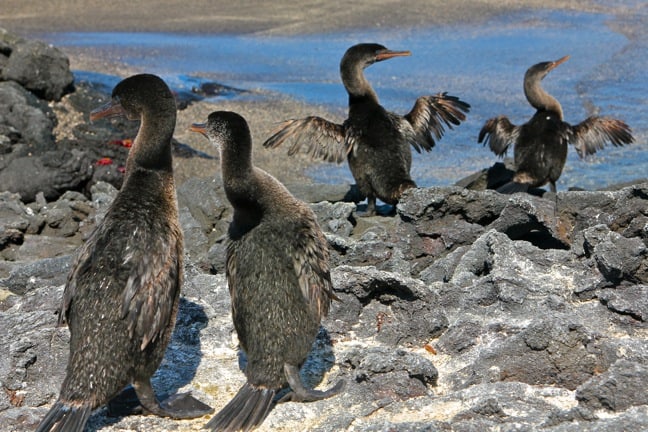
15. Flightless Cormorant
Latin Name:Nannopterum harrisi
Habitat:Rocky shores of volcanic islands
Size: Length: 2.91 to 3.29 feet; Weight: 5.5 to 11 pounds
Diet:Fish, octopus, squid
Conservation Status:Vulnerable, population stable
Found only in the Galapagos Islands, this is one of the most rare bird species in the world, with around 1000 left.
The Flightless Cormorant is an odd bird, with black and brown feathers, brilliant turquoise eyes, and low growling voices.
Their stubby wings are about 1/3 the size they'd need to fly, but in the water they could give any sea lion a run for its money.
They use their webbed feet and powerful legs to dive down to the bottom of the ocean in search of fish, eels, octopus and other small prey.
READ MORE: 30 Amazing Galapagos Islands Animals
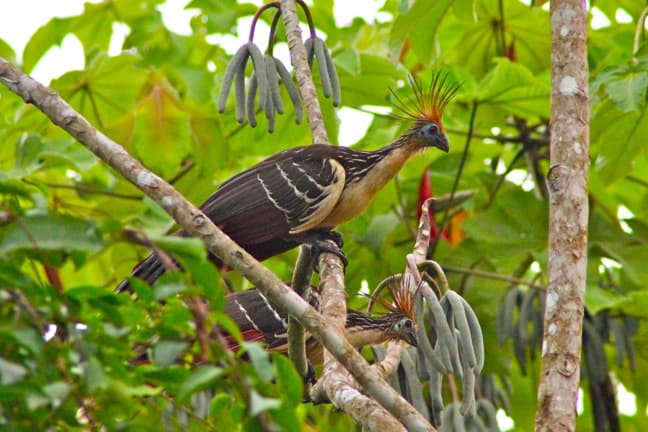
16. Hoatzin
Latin Name:Opisthocomus hoazin
Habitat:Forests along streams, mangrovs, swamps in South America
Size:Length: 25 to 26 in; Weight: 1.78 pounds
Diet:Marsh plants
Conservation Status:Least Concern, population decreasing
Also known as the Canje Pheasant (or punk-rock bird), Hoatzin are genetically enigmatic, and there's been intense scientific debate about their evolutionary connections to other species.
The pheasant-sized bird, whose chicks possess claws on two of their wing digits, is also called the Stinkbird due to the manure-like odor caused by its unique digestive system.
Their noises are just as odd, including a bizarre variety of groans, croaks, hisses and grunts that are often associated with its body movements.
READ MORE:40 Fascinating Facts about the Hawaiian Goose (a.k.a.Nene Goose)
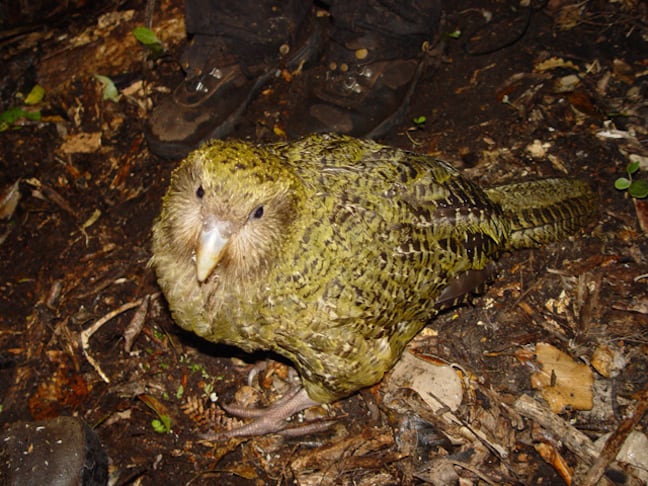
17. Kakapo
Latin Name:Strigops habroptila
Habitat:Coastal areas, scrublands, tussocklands
Size:Length: 23 to 25 in; Weight: 4.4 to 8.8
Diet:Plants, seeds, fruits, pollen
Conservation Status:Critically Endangered, population increasing
The Kakapo is one of the world's most endangered species, with a known population of around 125.
New Zealand 's "Owl Parrot" is an undeniable odd animal– large, flightless, nocturnal and ground-dwelling, weighing up to 9 pounds at maturity.
It's the only parrot in the world that mates by lekking: Males line up to put on a mating display en masse, and the females pick their favorites.
Unfortunately, these lovebirds only breed an average of three times a decade, when the fruit of the Rimu tree is abundant making it one of the most endangered birds.
READ MORE: Endangered Species that Mate for Life
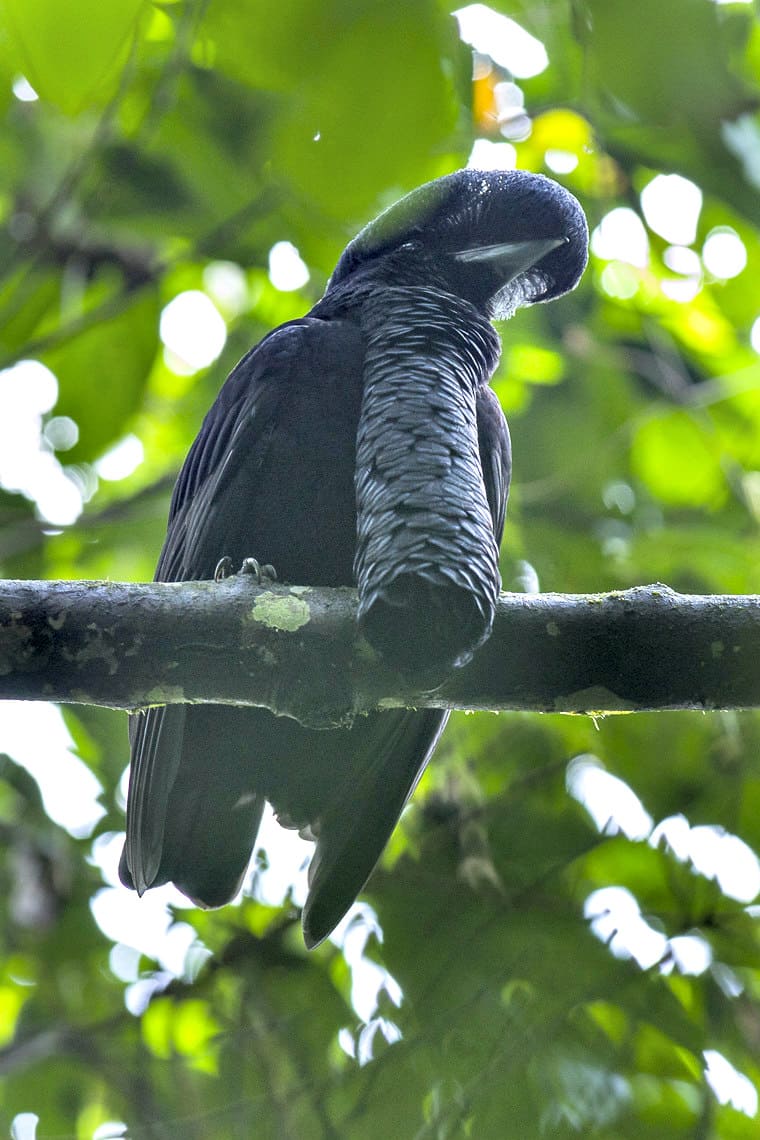
18. Long-Wattled Umbrellabird
Latin Name:Cephalopterus penduliger
Habitat:Forests in Colombia and Ecuador
Size:Length: 1.14 to 1.37 feet; Weight: 11.28 to 20.10 oz
Diet:Insects, lizards, fruit
Conservation Status:Vulnerable, population decreasing
Primarily found in the humid forests of Colombia and Ecuador , the Long-wattled Umbrellabird's features are as bizarre as their name.
The males have a magnificent coiff-like crest Elvis would kill for, with hair-like feathers that extend out over their bill.
Their wattle is even weirder: It's long, black, and hangs down 16 to 17 inches from the middle of their chest.
They can inflate it during courtship rituals to draw attention or retract it against their chest during flight.
READ MORE: Wildlife in the Ecuadorian Amazon
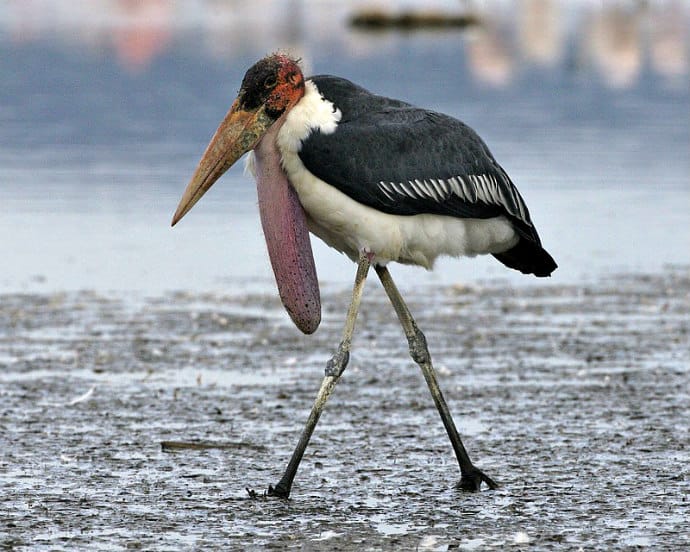
19. Marabou Stork
Latin Name:Leptoptilos crumenifer
Habitat:Savannas, grasslands, swamps, and riverbanks in Sub-Saharan Africa
Size:Length: 3.9 to 4.3 feet; Weight: 9.9 to 18 pounds
Diet:Carrion, human food waste, fish, insects, frogs, lizards, snakes, rats
Conservation Status:Least Concern
Found in Africa south of the Sahara, the Marabou Stork has a face only a mother could love.
With their long, skinny legs and feathers that look like a black jacket worn over a white dress shirt, it's easy to see how they earned their nickname, "the undertaker bird."
And then there's the massive bill, the bald pink head, and a featherless wattle hanging from their neck.
Weighing up to 18 pounds, with a wingspan that can measure over nine feet, this is one of Africa's most huge and hideous birds.
READ MORE: Animals in Kenya: A Guide to 40 Species of Kenyan Wildlife
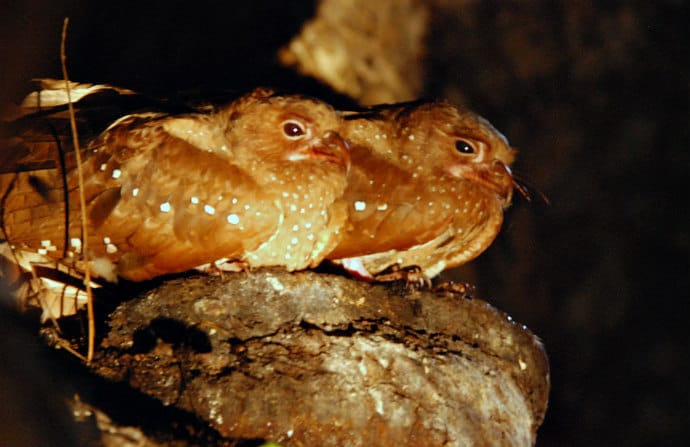
20. Oilbird
Latin Name:Steatornis caripensis
Habitat:Evergreen lowland and montane forests
Size:Length; 16 to 19 in; Weight: 12.3 to 16.8 oz
Diet:Fruit
Conservation Status:Least Concern, population decreasing
The Oilbird, known in northern South America asguácharo, is a striking beauty by contrast: Reddish-brown, with diamond-shaped white spots edged in black.
What makes this cave-dwelling fruit-eater odd is the fact that it is nocturnal and finds its food by using echolocation (much like bats and dolphins ).
And because its preferred food is the fruit of the oil palm (from which palm oil is produced), the aptly-named bird was once hunted and boiled down in order to extract their oil for use as fuel.
READ MORE: 10 Famous Underground Caves for Your World Bucket List
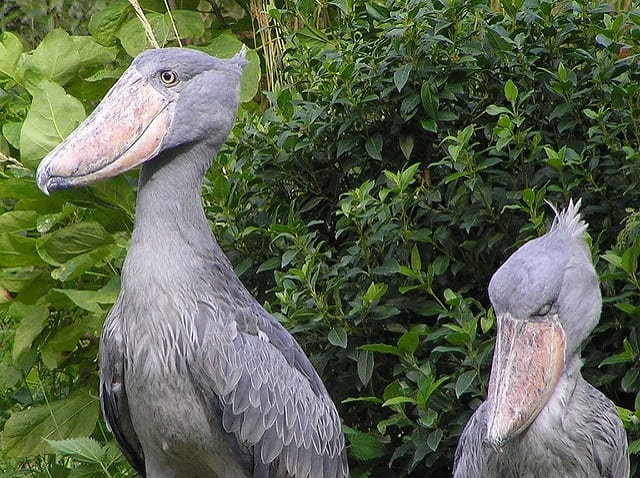
21. Shoebill
Latin Name: Balaeniceps rex
Habitat:Freshwater swamps and marshes in east Africa
Size:Height: 43 to 55 in; Length: 39 to 55 in; Weight: 8.8 to 15.4 pounds
Diet:Fish, young crocodiles, frogs
Conservation Status:Vulnerable, population decreasing
Also known as the Whalehead or Shoe-billed Stork, this strange bird is named for the shoe-like shape of its humongous bill, which allow it to catch surprisingly large prey.
They're found in east Africa, primarily in large tropical swamps from Sudan south to Zambia.
Seeing them in the wild is… well, wild, because they tend to stand silent and motionless for long periods of time.
With a height of 43 to 55 inches and a wingspan up to 8 feet 6 inches, these funny looking birds are hard to miss.
READ MORE: Endangered Elephants of East Africa
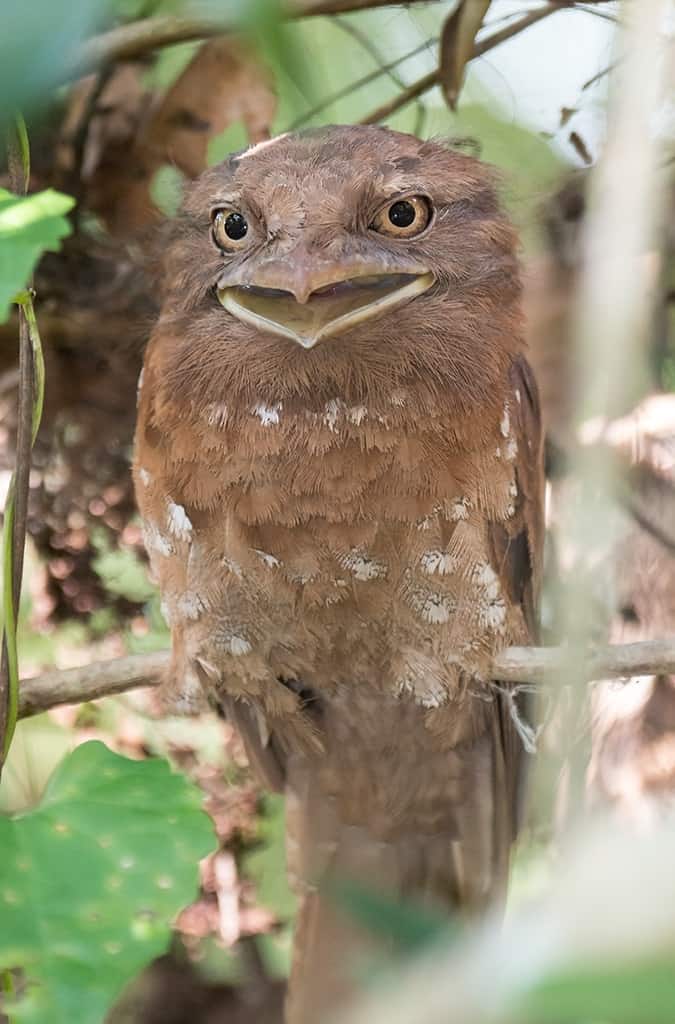
22. Sri Lanka Frogmouth
Latin Name:Batrachostomus moniliger
Habitat:Forests in the Western Ghats of South India and Sri Lanka
Size:Length: 9.1 in; Weight: 1.5 to 23.6 oz
Diet:Insects, frogs, mice
Conservation Status:Least Concern, population stable
Related to the Nightjars, this small Frogmouth is found in the Western Ghats mountain range of South India and Sri Lanka.
They live in the dense undergrowth of tropical forests, where their grey-brown feathers make them very difficult to see.
What makes them weird is their oversized head, which gives the nocturnal bird a wide field of binocular vision, and the gaping wide hooked bill for which they are named.
The short, stiff bristles around their eyes are another attractive distinguishing feature.
READ MORE: Conserving Sri Lanka Wildlife Using Poachers as Protectors

23. Superb Bird of Paradise
Latin Name:Lophorina superba
Habitat:Rainforests of New Guinea
Size:Length: 9.84 to 10.23 in; Weight: 1.9 to 3.7 oz
Diet:Fruits, berries, seeds, insects, amphibians, small reptiles
Conservation Status:Least Concern, population decreasing
If you've watched award-winning environmental documentaries such as Planet Earth, you've probably seen the dazzling mating dance that makes this iridescent New Guinea beauty so special.
Their female population is unusually low and competition for mating privileges is fierce.
Males will meticulously prepare their dance floor before loudly calling the object of their affection.
The dance is spectacular: He spreads his black feather cape and blue-green breast shield widely, snapping a beat with his tail feathers while hopping around her.
Most of the females will reject 15 to 20 suitors before giving one consent!
READ MORE: Galapagos Birds: 25 Spectacular Species

24. Horned Screamer
Latin Name:Anhima cornuta
Habitat:Freshwater lagoons, tropical wet savannas, lakes
Size:Length: 1.08 to 1.23 feet; Weight: 6.9 to 7.7 pounds
Diet:Aquatic plants, seeds, stems, leaves
Conservation Status:Least Concern, population decreasing
Although Horned Screamers are related to Swans, you wouldn't be able to tell from these funny looking animals' appearance.
As their name indicates, they have a horn-like appendage projecting from the top of their head. It seems to serve no particular purpose, unlike the spurs on their wings (which are used for fighting).
These unique birds clearly like to be heard, and have a very distinct call that is often performed as a duet between mating males and females.
The Horned Screamer resides in the marshes of South America, and is the official bird of the Department of Arauca in Colombia .
READ MORE: The Best Things to Do in Cartagena, Colombia
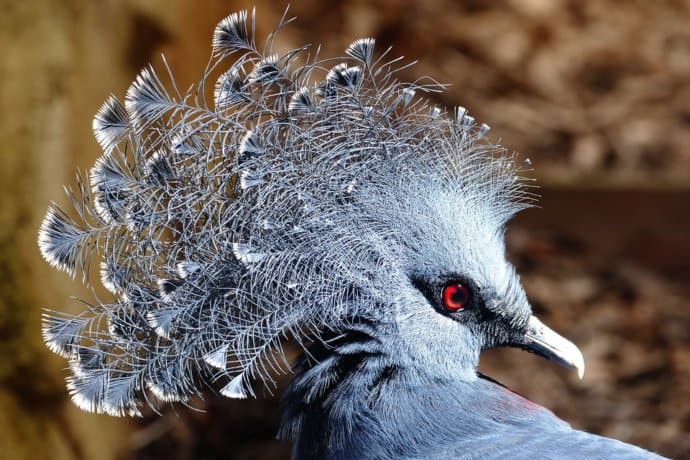
25. Victoria Crowned Pigeon
Latin Name:Goura victoria
Habitat:Lowland and swamp forests of northern New Guinea
Size:Length: 29 in; Weight: Up to 5.5 pounds
Diet:Fruit, seeds, grains, small invertebrates
Conservation Status:Near Threatened, population decreasing
Named after the British Monarch Queen Victoria, these colorful Pigeons are striking in their beauty.
They are powder blue with a purple chest and boast an intricate almost lace like crown that, along with their poise, makes them appear undeniably royal.
These interesting animals are the largest pigeons in the world and are the closest living relative to the extinct Dodo bird.
Native to the forests of New Guinea, Victoria Crowned Pigeons do not like to be alone and typically travel in pairs or small groups.
People are often surprised by their call which isn't like other pigeons' soft "coos," but rather a hollow "boom."
READ MORE: 35 Beautiful Birds of Hawaii & The Polynesian Triangle
WEIRD CREEPY CRAWLY CREATURES
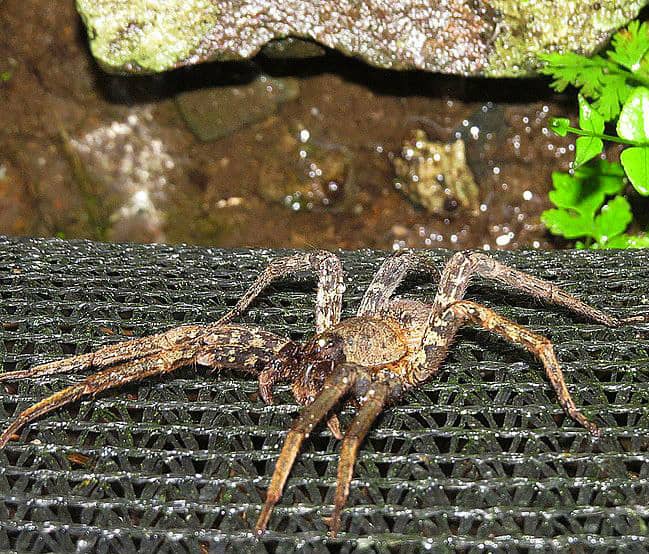
26. Amazon Giant Fishing Spider
Latin Name:Ancylometes
Habitat:Near ponds, lakes, rivers, and streams in South America
Size:Length: Up to 8 in; Weight: 0.4 oz
Diet:Insects, tadpoles, small fish
Conservation Status:Data Deficient
Proving big can be beautiful, this spectacular spider can grow up to 8 inches, with a brilliant green, gold, and white body.
Found in South America, they're semi-aquatic and usually seen at the edge of pools or streams.
There they wait for ripples that advertise prey (insects, tadpoles, and even small fish), then run across the surface to grab it and inject their venom.
Some subspecies of these weird creatures can even encase themselves in a silver air bubble and climb beneath the water.
READ MORE: 21 Incredible Animals That Live in the Amazon Rainforest
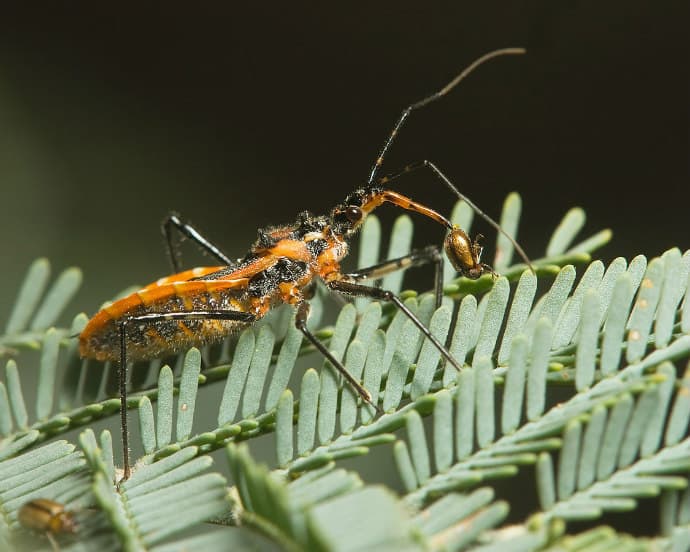
27. Assassin Bug
Latin Name: Reduviidae
Habitat:Rainforests
Size:Length: 0.2 to 1.6 in; Weight:
Diet:Ants, bees
Conservation Status:Data Deficient
These alien-looking predators are related to the plant-eating Shield Bug.
But they've adapted a piercing proboscis with which they feed upon their victims (ants and bees are their favorites).
The ninja-like skills for which they're named include coating themselves with ant carcasses to disguise their pheromones and covering their legs with tree sap to grab bees out of mid-air with their sticky claws.
They may not look like much, but these clever carnivores have some seriously deadly moves!
READ MORE:15 Harmful Traditionas & Cultural Practices

28. Driver Ant
Latin Name:Dorylus laevigatus
Habitat:Central, east, and southern Africa, tropical Asia
Size:Length: 4.52 cm
Diet:Insects, arachnids, earthworms
Conservation Status:Data Deficient
If you've ever seen a b-movie in which humans or animals are unexpectedly swarmed by hyper-aggressive ants, these merciless army ants (primarily found in central and east Africa) are likely the inspiration.
Sometimes called safari ants, they attack en masse, which often proves deadly for small animals when their colonies number up to 20 million members.
Their bite is painful, and their powerful jaws remain locked even if you kill the ant. Locals are known to use them to suture wounds in case of a medical emergency.
READ MORE: Top 10 Tanzania National Parks for the Ultimate Safari

29. Giant Katydid
Latin Name:Arantia fasciata
Habitat:Montane forests of Malaysia
Size: Length: Up to 6 in
Diet:Leaves, grass, fruit, tiny insects
Conservation Status:Least Concern
There are some 6,400 species of katydids in the Tettigoniidae family, which are closely related to crickets.
But the Giant Long-legged Katydid, found in the montane forests of Malaysia , are easily the largest.
They can grow up to 6 inches long– large enough to cover your hand– with antennae that can grow even longer. It's leaf-life wings make great camouflage, but their long legs are relatively useless.
They cannot jump well, and rarely fly. Their high-pitched mating call makes them one of the loudest insects in the world.
READ MORE:What is an Eco Lodge? The Top 20 Eco Resorts & Eco Hotels in the World
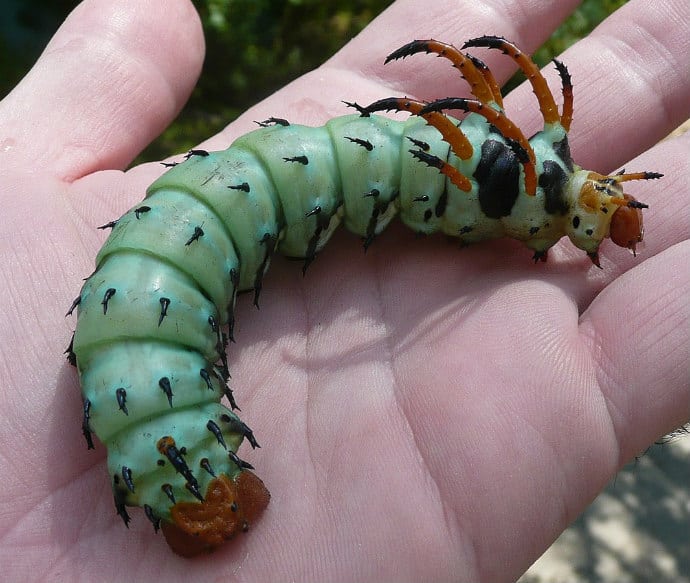
30. Hickory Horned Devil
Latin Name:Citheronia regalis
Habitat:Deciduous forests in the eastern United States
Size: Wingspan: 3.75 to 6.1 in
Diet:Leaves, walnuts, pecans, buttonbush, filbert, ash
Conservation Status:Data Deficient
Widely found in deciduous forests in the United States, the Regal Moth (a.k.a. Royal Walnut Moth) is as beautiful as any butterfly we've seen, with stunningly vivid colors.
But in the larval stage they're known as Hickory Horned Devils, and look like something out of a horror film director's nightmares.
They eventually turn green, with huge black-tipped red horns and what look like little black spikes all over their bodies.
The nocturnal feeders don't sting, but they do curl up into a j-shape during the day that makes them look like bird poop.
READ MORE:What is Permaculture Gardening? An Intro to Permaculture Design & Principles
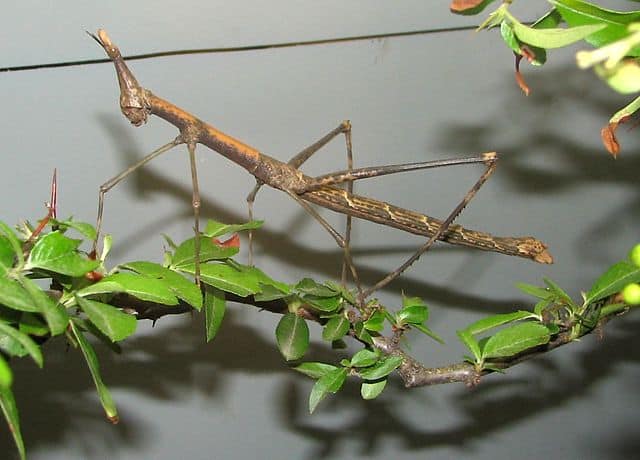
31. Jumping Stick
Latin Name:Proscopiidae
Habitat:Forests and grasslands in the tropics and subtropics
Size:Length: 2.6 in
Diet:Leaves, green plants
Conservation Status:Data Deficient
This skinny beanpole looks like a common Giant Walking Stick. But it's more closely related to the Locust, and is named for its ability to jump and kick like a kung fu master.
Its hind legs are 2.5 times as long as its front and middle legs, allowing it to propel its 2.6-inch body up to 3 feet in a single bound.
They're also known for their odd, elongated faces, with a Grasshopper-like mouth and large eyes on a stalk that help it look for predators and attract mates.
READ MORE: The 20 Best Things to do in Kauai, Hawaii
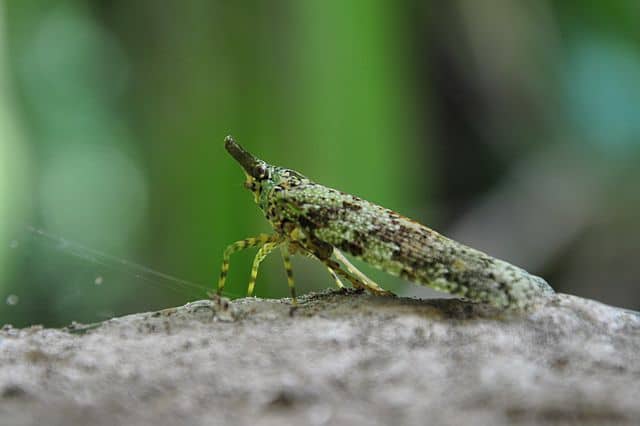
32. Lantern Fly
Latin Name:Lycorma delicatula
Habitat: Southeast Asia, United States
Size:Length: 1 in
Diet:Sap, excrete
Conservation Status:Data Deficient
Don't let the name fool you. This odd-looking Amazonian insect looks more like a moth than a fly, and their massive peanut-shaped heads don't light up.
They have vivid spots on their wings that some people believe help to scare off predators by mimicking the eyes of a much larger animal.
There's also a myth in certain local populations that if the bug bites someone (which it doesn't), they'll die if they don't have sex within a day. I wonder how many young men have used that line?
READ MORE: The Effects of Mass Tourism (How Overtourism is Destroying 30+ Destinations)
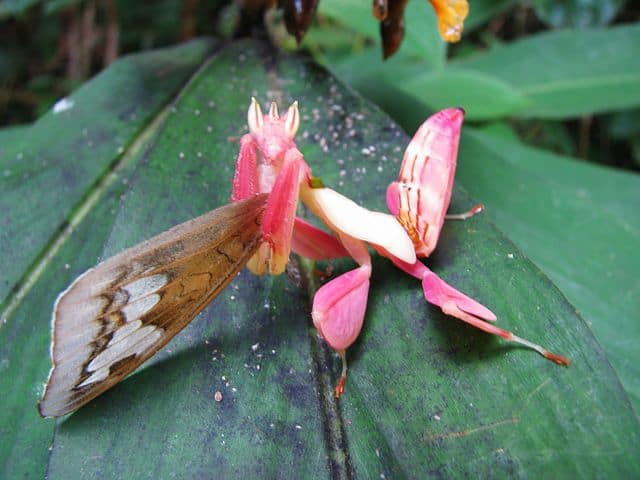
33. Orchid Mantis
Latin Name:Hymenopus coronatus
Habitat:Humid regions of Malaysa
Size:Length: 1 to 3 in
Diet:Bees, butterflies, moths, crickets, flies, beetles
Conservation Status:Data Deficient
This is arguably among the world's most beautiful insects outside of the butterfly family.
The Orchid Mantis is one of several species of flower mantises, which look like and mimic the flowers upon which they're often found.
Their brilliant colors can change,and range from white and yellow to pink and brown.
Each of its four legs resembles flower petals, which they use to their advantage by swaying to lure insects, then eating them.
They've also been known to eat larger vertebrates, such as lizards and frogs.
READ MORE: The 13 Most Beautiful National Parks in Thailand
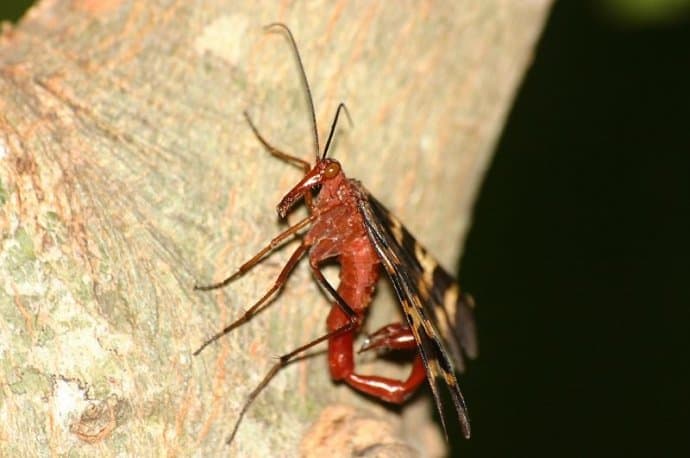
34. Scorpionfly
Latin Name:Panorpa nuptialis
Habitat:Wooded areas, ravines
Size: Length: Up to 1.2 in
Diet:Dead insects, nectar, rotting fruits
Conservation Status:Data Deficient
What fresh hell is this? Picture an ancient insect that dates back some 174 million years, with the long beak of a pterodactyl, the coloring of a wasp, and the stinger of a scorpion.
Then imagine it's closely related to a flea and scavenges the bodies of dead invertebrates. Sounds haunting and horrifying, right?
The fact that the stinger is actually enlarged genitals might make you feel a little better, but the fact that there 350+ species of them probably won't.
READ MORE: The 15 Most Haunted Hotels in America
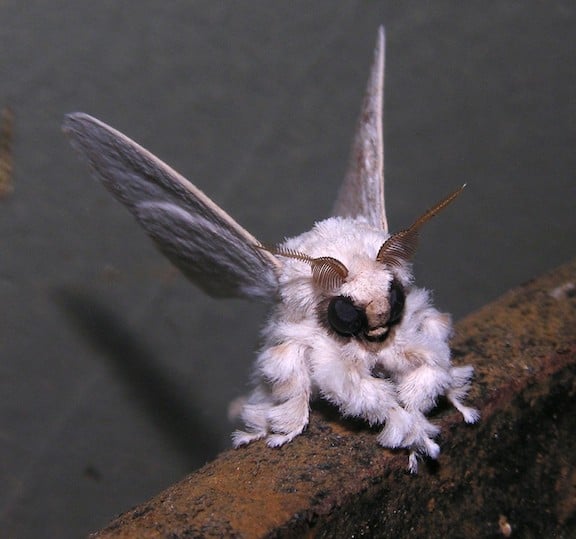
35. Venezuelan Poodle Moth
Latin Name:Artace
Habitat:Canaima National Park in Venezuela
Size:Length: 1 in
Diet:Herbaceous plants
Conservation Status:Data Deficient
Discovered in Venezuela's Gran Sabana region by Kyrgyzstan's Dr. Arthur Anker in 2009, this unusual insect looks like a cross between a poodle and an angora sweater.
Ankara's odd (some might say adorable) discovery went relatively unnoticed for several years, until someone posted his photo of the fuzzy white moth with bulging black eyes and bizarre antennae online.
It quickly went viral, but the moth (which experts believe belongs to the Artace genus) has yet to be confirmed as a new species.
READ MORE: 40 Green Travel Tips (The Ultimate Guide to Sustainable Travel)
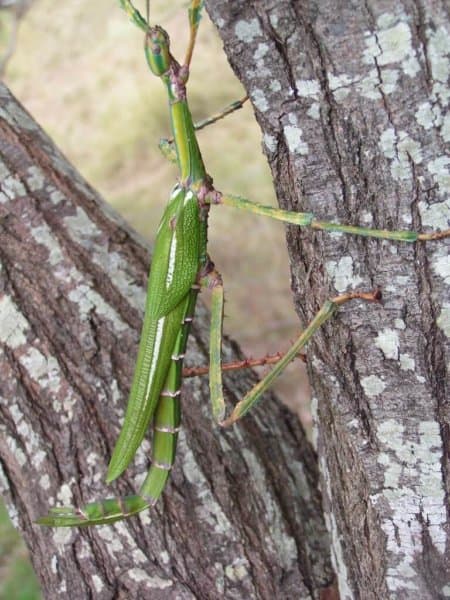
36. Eastern Goliath Stick Insect
Latin Name:Eurycnema goliath
Habitat:Forests of northern and eastern Australia
Size:Length: Up to 25 cm
Diet:Eucalyptus, acacia, callistemon
Conservation Status:Least Concern
Found in northern and eastern Australia, these cool animals are the largest phasmids in the continent, with females reaching lengths of up to 25 cm.
Due to their large size and smaller wings, females cannot fly like their male counterparts do.
Their camouflage is pretty amazing. It's nearly impossible to see them when their hiding in the treetops because of their green color and stick-like figure.
When neecessary due to threats, they'll make a sharp hissing sound and open their wings to uncover a red underside. Both of these defenses are designed to ward off predators.
READ MORE: Things to Do in Australia for Nature Lovers
UNIQUE MAMMALS
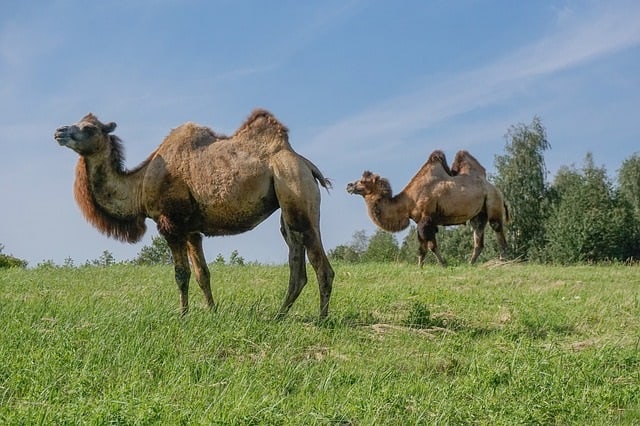
37. Bactrian Camel
Latin Name:Camelus ferus
Habitat:Steppes of Central Asia
Size:Height: 5.9 to 7.5 feet; Length: 7.38 to 11.48 feet; Weight: Up to 1,000 pounds
Diet:Plants, bones, other animals' skin
Conservation Status:Critically Endangered, population decreasing
Native to the Steppes of Central Asia, the Bactrian Camel is differentiated from its more familiar Arabian cousins by the fact that it has two humps.
It has genetically adapted well to the region's extreme climate.
It has squishy foot pads that work like snowshoes to help it keep its footing in the desert sand, and a coat that is remarkably which in winter and nearly bald in summer.
Unfortunately, though the domesticated species is plentiful, the wild ones are critically endangered.
READ MORE: 30 Facts about the Mongolian Horse (a.k.a.Przewalski's Horse or Takhi)
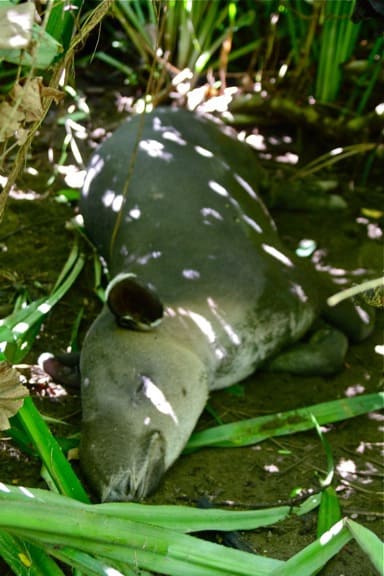
38. Baird's Tapir
Latin Name:Tapirus bairdii
Habitat: Rainforests, montane forests, deciduous forests, flooded grasslands
Size:Length: 6.6 feet; Weight: 330 to 880 pounds
Diet:Leaves, twigs, fruit, seeds
Conservation Status:Endangered, population decreasing
Looking like a bizarre cross between a pig, a donkey and a rhinoceros, this cow-sized mammal is an endangered species endemic to Central and South America.
Known as the Mountain Cow in Belize , it is celebrated as the national animal. Baird's tapir is most active at night but are frequently seen during the day.
One famously attacked the Costa Rican Minister of Environment in 2006, and we were fortunate to catch one taking a catnap in Corcovado National Park .
READ MORE: 40 Amazing Costa Rica Animals
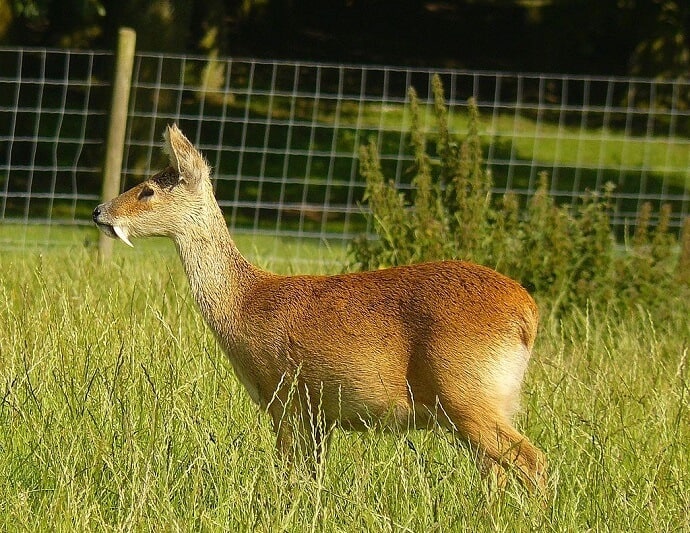
39. Chinese Water Deer
Latin Name:Hydropotes inermis
Habitat:Rivers and islands of China and Korea
Size:Length: 2.5 to 3.3 feet; Weight: 20 to 31 pounds
Diet:Coarse grasses, vegetables, beets, reeds
Conservation Status:Data Deficient
More similar to a Musk Deer than a true Deer, Water Deer are proficient swimmers who live along the rivers and islands of China and Korea.
But the Chinese subspecies is particularly unusual. What makes this deer one of the strangest animals is that it has prominent tusks, which are actually elongated canine teeth.
These especially long teeth led to the Chinese Water Deer's English nickname, the Vampire Deer.
Able to swim for several miles, the Chinese Water Deer can also pull their canines tusks back by using their facial muscles.
READ MORE: 20 Longest Rivers in the World by Continent
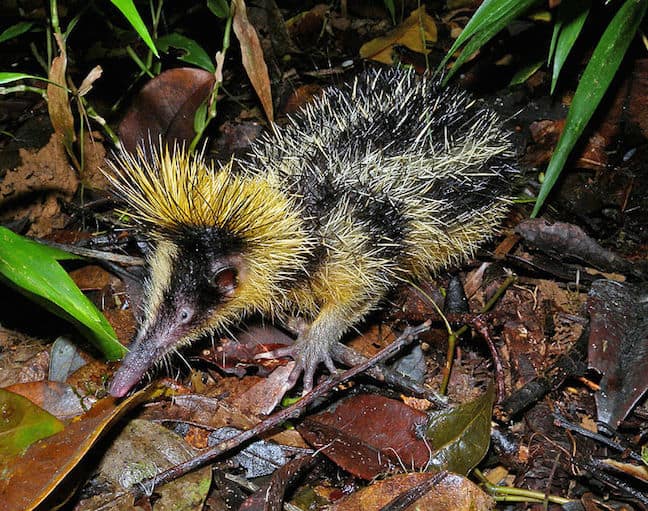
40. Lowland Streaked Tenrec
Latin Name:Hemicentetes semispinosus
Habitat:Tropical lowland rainforest in northern and eastern Madagascar
Size:Length: 5 to 6 in; 3.17 to 7.05 oz
Diet:Earthworms
Conservation Status:Least Concern
Genetically, the Tenrec is like a cross between a shrew, an opossum and an otter, with a 5-6 inch body, long snout and vestigial tail.
These unique animals are the only mammals known to use stridulation for generating sound, a method more commonly associated with insects and snakes.
Found only in the rainforests of Madagascar, its bright yellow stripes and barbed quills signal danger for predators, especially when the Tenrec vibrates them.
READ MORE: Madagascar Animals

41. Markhor
Latin Name:Capra falconeri
Habitat:Mountain ranges from Afghanistan to northern India
Size:Length: 4.3 to 6.08 feet; Weight: 71 to 243 pounds
Diet:Grass, leaves
Conservation Status:Near Threatened, population increasing
This large wild goat grazes on grass and lives in mountain ranges from Afghanistan to northern India , but it's the national animal of Pakistan.
The male Markhor can grow to over 200 pounds, has a crazy amount of hair on their chin and chest, and boasts spectacular spiraling horns atop their heads.
The world's population got down to around 2,500, but has rebounded by 20% in the last decade.
Its Persian name translates as "snake eater," and locals believe the foam they release while chewing cud can extract snakebite venom.
READ MORE: 40 Interesting Facts About Snow Leopards
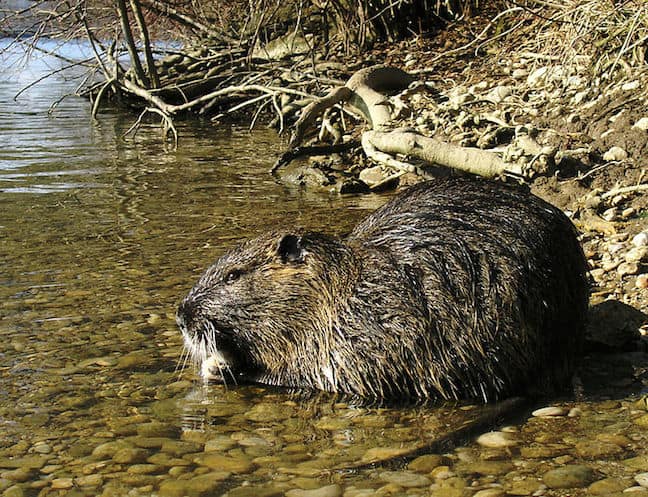
42. Nutria
Latin Name:Myocastor coypus
Habitat:Freshwater marshes, wetlands
Size:Length: 17 to 25 in; Weight: 15 to 22 pounds
Diet:Insects, freshwater mussels, crustaceans
Conservation Status: Least Concern, population decreasing
Also known as the Coypu or river rat, this large, semi-aquatic rodent is native to subtropical South America.
It's also been introduced on other continents by fur ranchers, but it is a destructive species with its feeding and burrowing behavior turning it into an an invasive persona non grata.
The nutria has front legs for excavating roots, rhizomes, and burrows, and webbed hind feet to aid in swimming.
Weighing up to 37 pounds, they look a lot like the R.O.U.S. from The Princess Bride.
READ MORE: The 20 Best Cultural Festivals Around the World
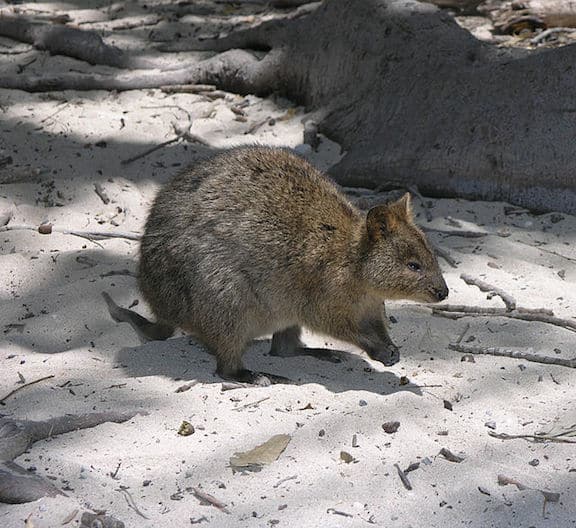
43. Quokka
Latin Name:Setonix brachyurus
Habitat:Small islands off the coast of Western Australia
Size:Length: 20 to 30 in; Weight: 6 to 11 pounds
Diet: Leaves, stems, bark, grass
Conservation Status:Vulnerable, population decreasing
With a small population primarily found on small islands off the coast of Western Australia , this adorable marsupial was originally confused for a wild cat or a giant rat.
But the adorable animal actually looks more like a tiny Kangaroo , measuring approximately 20-30 inches long and weighing 6 to 11 pounds.
The cute Quokka has little fear of humans, but it is illegal to touch or feed them, as it can make the Vulnerable species sick. Fines for doing so start at $300.
READ MORE: Animal Selfies: The Problem with Putting Ego Over Responsibility
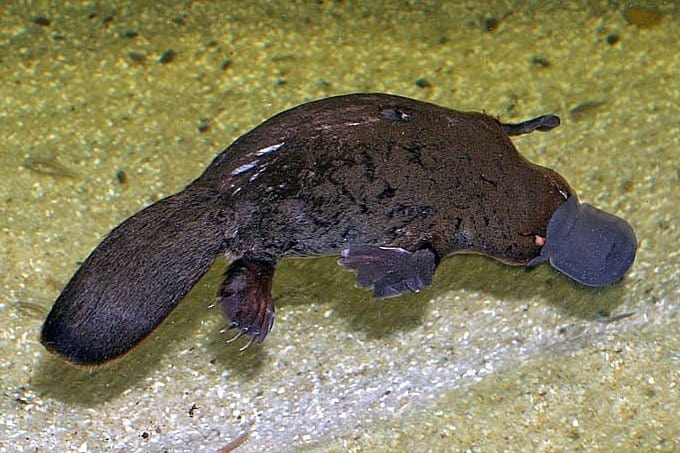
44. Platypus
Latin Name:Ornithorhynchus anatinus
Habitat:Freshwater lakes, rivers, lagoons, farm dams, streams
Size:Length: 17 to 20 in; Weight: 1.5 to 5.3 pounds
Diet:Annelid worms, insect larvae freshwater yabby and shrimp
Conservation Status:Near Threatened, population decreasing
Want to know just how extremely weird the Platypus is?
The first scientists to study them (back in 1799) deemed them fake, made from sewing several different weird animals together!
It's easy to understand their confusion. This adorable oddball has the bill of a Duck, the feet of an Otter, the tail of a Beaver, and venom in the spur of the male's foot.
It's also one of only two mammals in the world that lays eggs.
They were once hunted for their fur but are now protected throughout their range in eastern Australia.
READ MORE: Tasmanian Devil Conservation on Maria Island
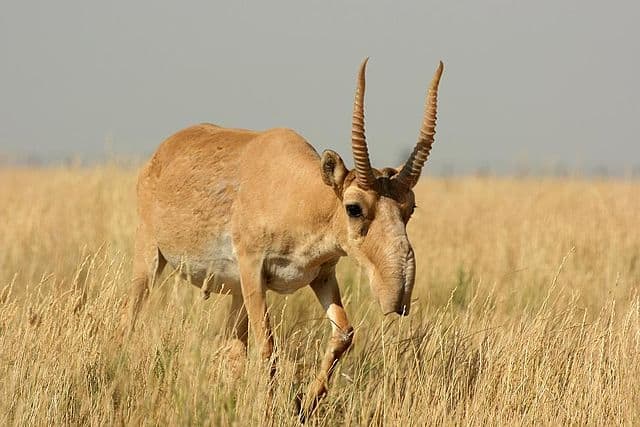
45. Saiga Antelope
Latin Name:Saiga tatarica
Habitat:Grasslands, open woodlands, semideserts, steppes
Size:Length: 3.25 to 4.58 feet; Weight: Up to 150 pounds
Diet:Plants, low growing vegetation
Conservation Status:Critically Endangered, population decreasing
Though their range today is limited to Russia and the 'stans of Central Asia, this critically endangered antelope species had a vast range during the Ice Age.
Standing 24 to 32 inches at the shoulder and weighing up to 150 pounds, these bizarre animals are known for their bloated shnozz, which looks a bit like someone docked an Elephant's trunk.
But the nose serves a valuable purpose, warming frigid air during winter while cooling and filtering out dust in the summer.
READ MORE: 50 Facts About Elephants (for World Elephant Day)
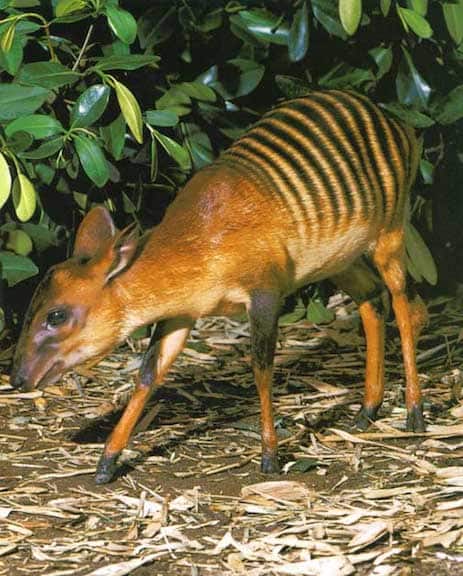
46. Zebra Duiker
Latin Name:Cephalophus zebra
Habitat:Lowland primary rainforests of West Africa
Size:Length: 30 to 35 in; Weight: 40 to 45 pounds
Diet:Leaves, shoots, seasonal fruits
Conservation Status:Vulnerable, population decreasing
Also known as the Banded or Striped-back Duiker, this diminutive antelope species is found in the lowland primary rain forests of West Africa .
Thought to be one of the earliest of the Duiker species to evolve, they're tiny (30-35 inches long, weighing 40-45 pounds), with short, sharp horns.
Their Zebra-like stripes help them hide from the many predators that eat them.
They also have super-powerful nasal bones, which allow them to use their face to crack open the tough exterior of certain fruits.
READ MORE:50 Fascinating Facts about Giraffes

47. Sulawesi Babirusas
Latin Name: Babyrousa celebensis
Habitat:Swamps and rainforests of Indonesia
Size:Length: 2.75 to 3.58 feet; Weight: Up to 220 pounds
Diet:Leaves, fruits, berries, mushrooms, insects, fish
Conservation Status:Vulnerable, population decreasing
Of all the mammals in the world, the male Sulawesi Babirusas is the only one to have vertically growing canine teeth.
Their not-so-pearly whites actually grow through their skin and curve back towards their forehead, ultimately reaching up to 17 inches long.
Native to the rainforests and swamps of Indonesian islands , these unusual animals are not picky eaters. Their diet consists of everything from leaves and insects to fish, and even smaller Babirusas!
Their antler-like teeth, along with a stocky body and slender legs, led to their name: Babirusas means "pig-deer" in the Malay language.
READ MORE: Fascinating Facts About Bornean & Sumatran Orangutans
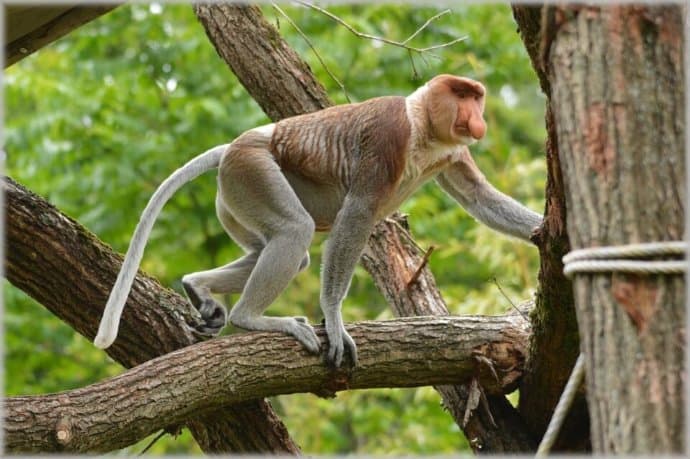
48. Proboscis Monkey
Latin Name:Nasalis larvatus
Habitat:Mangrove swamps, lowland rainforests
Size:Length: 1.7 to 2.5 feet; Weight: 21 to 45 pounds
Diet:Leaves, seeds, unripe fruits, insects
Conservation Status:Endangered, population decreasing
These weird animals earned the name Proboscis from their bulbous noses, which can grow up to 7 inches long.
Though they may appear odd to us, they also prove that beauty is in the eye of the beholder. Because Proboscis Monkey males actually use their ginormous noses to attract female mates.
Found in the jungles of Borneo (including the Kabili-Sepilok Forest Reserve ), these monkeys are largely arboreal. spending most of their time in the trees. But, surprisingly, they are extremely strong swimmers as well.
Due to palm oil deforestation and other forms of habitat destruction, their populations have declined sharply in recent years. So the species is currently listed as endangered on the IUCN Red list.
READ MORE:50 Interesting Facts About Gorillas
UNUSUAL NOCTURNAL ANIMALS
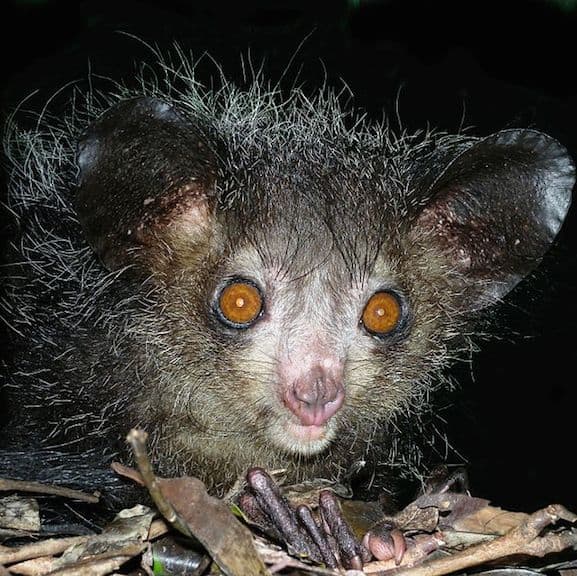
49. Aye-Aye
Latin Name:Daubentonia madagascariensis
Habitat: Rainforests and deciduous forests on the east coast of Madagascar
Size:Length: 14 to 17 in; Weight: 4 pounds
Diet:Nuts, nectar, fungi, insect grubs
Conservation Status:Endangered, population decreasing
These endangered Lemurs are the world's largest nocturnal primate and have furry gremlin faces, rodent-like teeth, and long Crypt Keeper-style fingers.
To find food, the Aye-Aye first taps on trees to find grubs, then chews a small hole before using their narrow middle finger to pull a tasty meal out of the wood.
Some superstitious locals believe these weird animals to be harbingers of evil or death and will often kill them on sight.
READ MORE: Madagascar: Conserving Ring-Tailed Lemurs

50. Colugo
Latin Name:Cynocephalus volans
Habitat:Forests of southeast Asia
Size:Length: 14 to 16 in; Weight 2 to 4 pounds
Diet:Leaves, fruits, flowers, shoots, insect
Conservation Status:Vulnerable
Found in the forests of Southeast Asia, these gliders are also known as Cobegos or Flying Lemurs (but they're not true Lemurs).
They're the world's most skillful gliding mammals, using flaps of extra skin between their legs to soar from tree to tree.
Measuring 14 to 16 inches long and weighing just two to four pounds, their light build allows them to "fly" up to 230 feet.
But they're not very strong, so they have to hop slowly up the trees using their sharp claws.
READ MORE: Top 15 Things to Do in Coron, Palawan (Philippines)
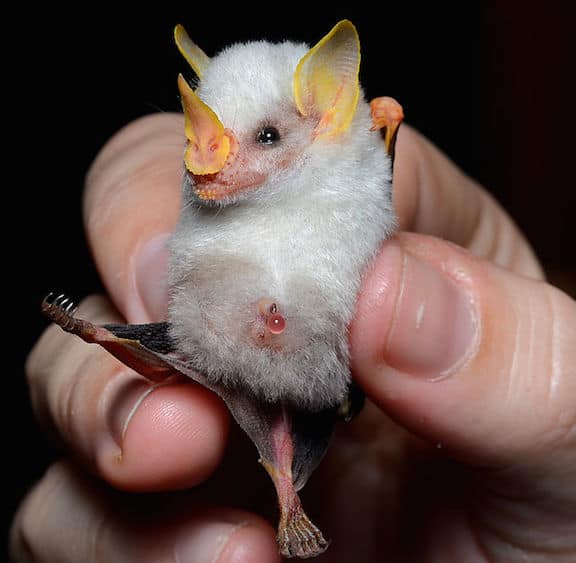
51. Honduran White Bat
Latin Name:Ectophylla alba
Habitat:Jungles of Central America
Size: Length: 1.5 in; Weight: 0.2 oz
Diet:Fruit, vegetation
Conservation Status:Near Threatened
Also known as the Ghost Bat, this tiny (1.5-inch) cutie is one of only two white bat species in the world.
They're found only in the jungles of Central America, where they're usually seen hanging in colonies of up to 6 from heliconia plants.
They'll actually cut the large leaves of the plant, which causes them to fold down into a tent that protects the colony from rain and predators.
They are one of 15 different Latin American bat species known roost in this type of natural tent.
READ MORE: The 16 Best Mayan Ruins to Explore
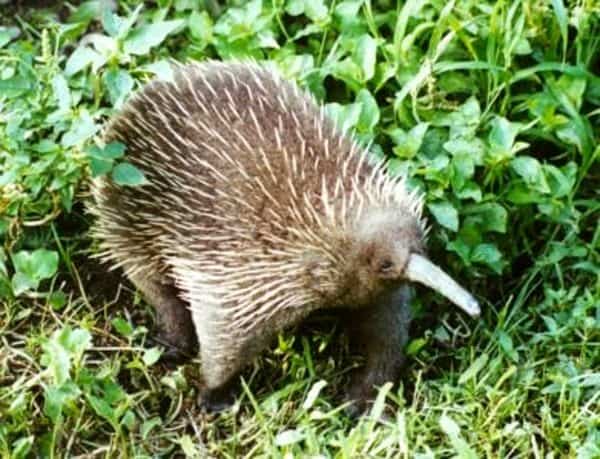
52. Long-Beaked Echidna
Latin Name:Zaglossus bruijnii
Habitat: Tropical hill forests, sub-alpine forests
Size:Length: 18 to 30 in; Weight: 20 pounds
Diet:
Conservation Status:Critically Endangered, population decreasing
This freaky-looking fella, found in New Guinea, is one of only two mammals in the world known to lay eggs. Yet they have the fur and lactation abilities of other mammals.
They also have a pointy, beak-like snout that's two-third the length of their head; spiky spines scattered among their hair; and, in the case of males, spurs on each of their hind legs.
There are three living species of Echidnas, but unfortunately all of them are classified as critically endangered and they're rarely seen during the day.
READ MORE: 20 Tallest Mountains in the World by Continent
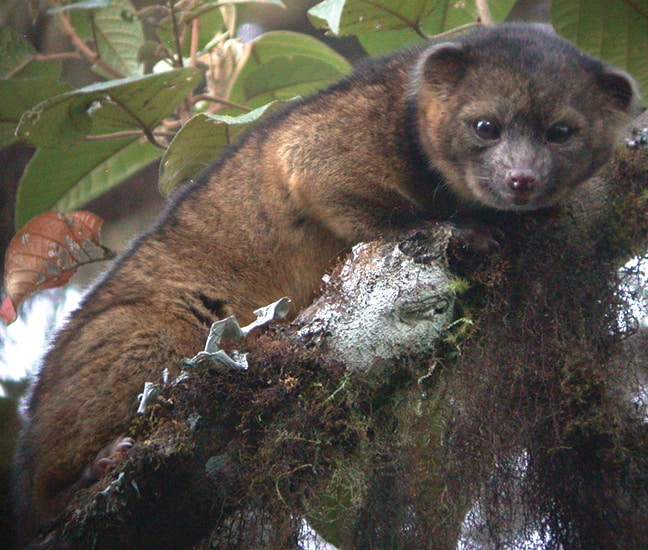
53. Olinguito
Latin Name:Bassaricyon neblina
Habitat:Forests of the northern Andes Mountains, Ecuador and Colombia
Size:Length: 13 to 17 in; Weight; 2 pounds
Diet:Fruit, insects, nectar
Conservation Status:Near Threatened, population decreasing
Colloquially known as the "kitty bear," this cuddly cutie is actually from the raccoon family.
It was discovered in the Andes of Colombia and Ecuador in 2013, making it the first new carnivorous mammal seen in the Western Hemisphere in 35 years.
Though they resemble the Kinkajou, they're more closely related to Coatis, with extended muzzles and anal scent glands.
Not much is known about this relatively new species, but they are believed to live in trees and be solitary and fairly reclusive.
READ MORE:Best Coffee in the World (A Gourmet's Guide to 30 Types of Coffee

54. Pangolin
Latin Name:Pholidota
Habitat:Tropical and flooded forests, savanna grassland
Size:Length: 12 to 39 in; Weight: 8 to 29 pounds
Diet:Ants, termites, larvae
Conservation Status: Near Threatened
There are eight species of Pangolin found on two different continents (Asia and Africa).
But due to poaching, deforestation , and the fact that they're the most heavily trafficked mammals in the world, two are endangered and two are critically endangered.
They look like some sort of ancient Armadillo/pine cone hybrid, with overlapping armored scales, long tongues, and stink glands like a Skunk's.
They're solitary animals, living in hollowed trees and burrows, and curl up into a ball when threatened.
READ MORE: Saving Endangered Asian Animals (Best Conservation Programs)
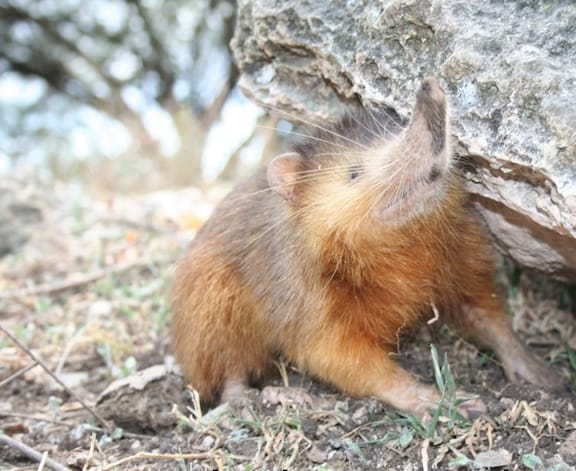
55. Solenodon
Latin Name:Atopogale cubana
Habitat:Forests in Cuba, the Dominican Republic, and Haiti
Size:Length: 12 to 14 in; Weight 1.8 to 2 pounds
Diet:Insects, earthworms, small reptiles, amphibians, fruits
Conservation Status:Endangered, population decreasing
These nocturnal, burrowing insectivores are found in Cuba , the Dominican Republic , and Haiti ,
They're endlessly fascinating to phylogenetic researchers because they closely resemble a species that went extinct near the end of the dinosaur era.
Solenodons may look like rodents, but they're more closely related to shrews and moles.
They're also the only mammals in the world that inject their prey with venom, using special grooves in their teeth.
READ MORE: 20 Best Caribbean Islands to Visit (If you Love Nature & Hate Crowds)

56. Tarsier
Latin Name:Tarsius tarsier
Habitat:Forests in southeast Asia
Size:Length: 4 to 6 in; 1.1 to 5.6 oz
Diet:Insects, birds, bats, snakes, lizards
Conservation Status:Vulnerable, population decreasing
With a longer fossil record than any other primate genus, fossils suggest the enormous-eyed Tarsiers of Southeast Asia haven't evolved much in the last 45 million years.
The only thing that has changed is their size: Their bodies measure 4-6 inches, with tails twice as long.
These interesting animals have enormous eyes (16mm wide– as big as their brain!), super sensitive ears, and uniquely shaped head makes them great at catching prey such as bats, birds, and insects.
Their long bodies also make Tarsiers great leapers.
READ MORE: The Best Environmental Charities and Animal Charities

57. Water Opossum
Latin Name:Chironectes minimus
Habitat:Freshwater streams in Latin America
Size:Length: 28 in; Weight: 1.7 pounds
Diet:Fish, crabs, freshwater shrimp, frogs
Conservation Status:Least Concern, population decreasing
Known locally as the Yapok, this semiaquatic opossum is found near freshwater streams and lakes in Latin America, from Mexico south to Argentina .
The Water Opossum is the only marsupial in the world in which both sexes have a pouch.
The males place their genitalia inside their pouch while swimming (kind of like a banana hammock) in the water , which helps streamline their bodies.
The pouch is also water-tight, which keeps their young dry even when the parent is swimming.
READ MORE: Isla Holbox, the Hidden Gem of Quintana Roo, Mexico
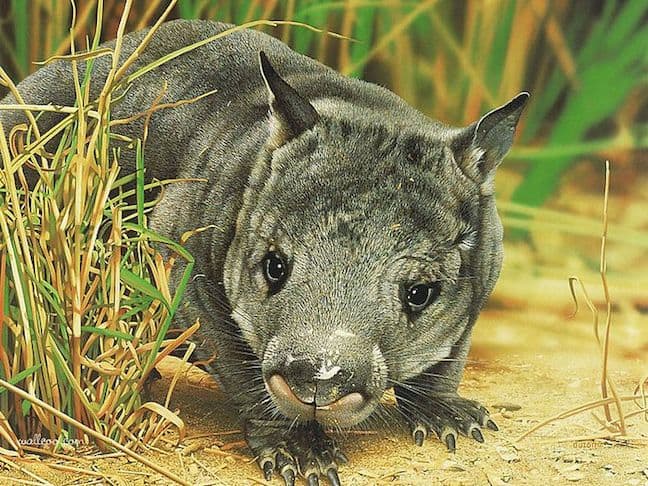
58. Wombat
Latin Name:Lasiorhinus kreffti
Habitat:Queensland's Epping Forest National Park
Size:Length: 3.28 feet; Weight: 90 pounds
Diet:Leaves, grasses
Conservation Status:Critically Endangered, population stable
Once common in Australia, the Northern Hairy-Nosed Wombat is now one of the most rare animals in the world. It is critically endangered and found only in Queensland's Epping Forest National Park.
With a backwards-opening pouch and teeth that never stop growing, it's the world's largest (90 pounds) burrowing mammal.
As weird animals go, we think this one's a cutie!
Unfortunately they're also critically endangered due to predators such as the Dingo, with less than 100 individuals remaining.
READ MORE:Top 10 Australian National Parks (For Your World Bucket List)
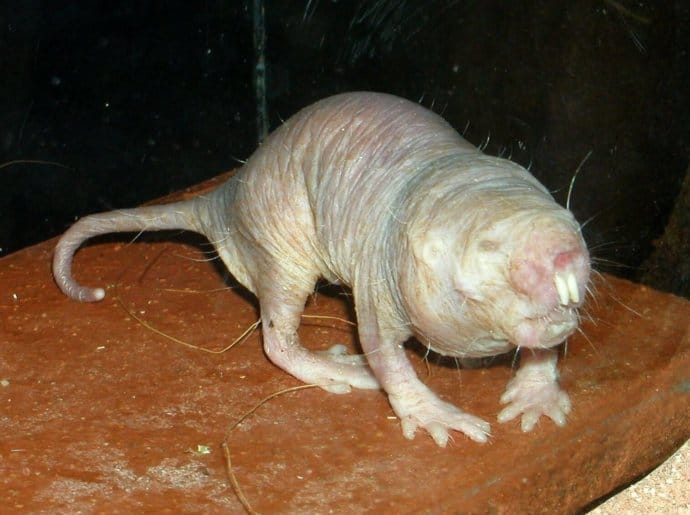
59. Naked Mole Rat
Latin Name:Heterocephalus glaber
Habitat:Grasslands of East Africa
Size:Length: 5.1 in; Weight: 1.2 oz
Diet:Tubers, roots
Conservation Status: Least Concern, population stable
Appearing just as you would think based on their name, these strange looking animals have wrinkly pink skin as if they were completely missing a coat of fur.
Found in East Africa, Naked Mole Rats are the longest living rodents in the world and are one of the rare eusocial species.
This means they live in communities of several dozen, led by one dominant female rat. They make their homes in intricate underground burrows, which are dug with their large front teeth.
They don't have ears at all and have such tiny eyes that they are practically blind. They rely heavily on their sense of smell and pay close attention to vibrations in the ground.
READ MORE: Maasai Mara Conservancies: Community-Based Wildlife Conservation
COOL ANIMALS FROM THE SEA
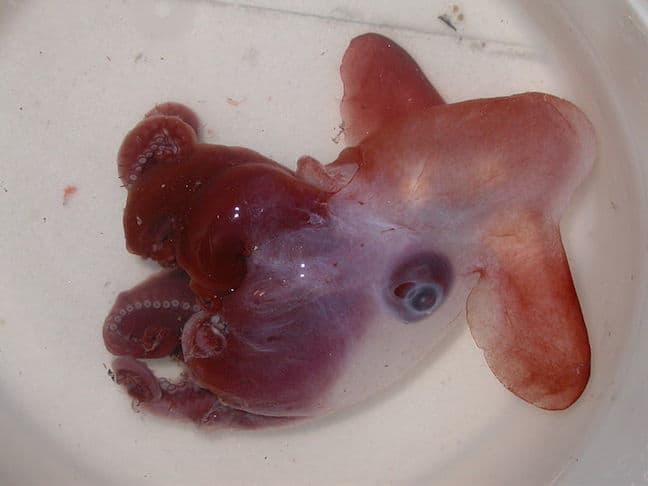
60. Dumbo Octopus
Latin Name:Grimpoteuthis
Habitat:Ocean floor
Size:Length: 8 in; Weight: 13 pounds
Diet:Copepods, isopods, bristle worms, amphipods
Conservation Status:Data Deficient
Found only at extreme ocean depths of 10,000 to 13,000 feet, Grimpoteuthis is a genus containing 13 species of Octopus, whose webbed tentacles look like an umbrella when spread.
Theses cool animals are known for the prominent ear-like fins, which jut out comically just above their eyes (much like a certain flying Elephant from the Walt Disney stable).
Though they're found in deep waters all around the world, they rank among the most uncommon animals of the Octopus species.
READ MORE: 40 Alaskan Animal Species

61. Frilled Shark
Latin Name:Chlamydoselachus anguineus
Habitat:Sea floor of the Atlantic and Pacific Oceans
Size:Length: 6.6 feet
Diet:Squid, fish, other sharks
Conservation Status:Least Concern
One of the world's most rarely seen creepy animals, the Frilled Shark crosses the line into frightening, WTF territory.
Found in the Atlantic and Pacific Oceans at depths of up to 5,000 feet, this rare "living fossil" is a positively prehistoric species of shark .
Its monstrous appearance includes an eel-like body, six frilly pairs of gill slits, and 300 trident-shaped teeth in 25 rows that allow it to rip through prey like a knife through hot butter. Cute, huh?
READ MORE:Arctic Animals: 30 Species of Arctic Birds, Mammals & Whales
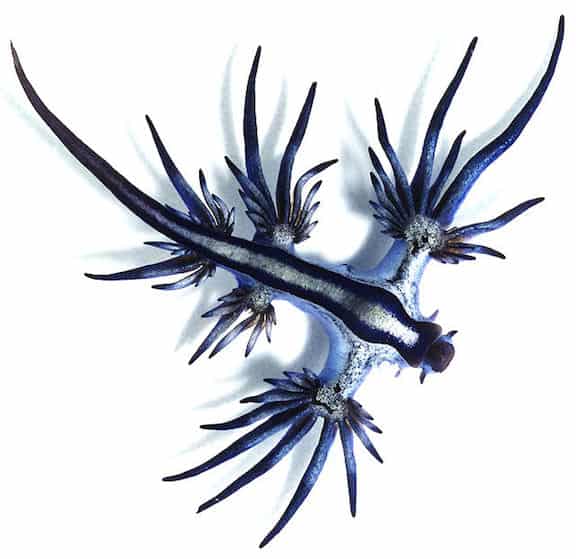
62. Glaucus Atlanticus
Latin Name:Glaucus Atlanticus
Habitat:Temperate and tropical waters
Size:Length: 1.2 in
Diet:Portugese Man o'War jellyfish
Conservation Status:Data deficient
More commonly known as the Blue Dragon or Blue Sea Slug, this inch-long nudibranch is just as lethal as it is lovely.
The creature preys on the Portuguese Man o' War (which is pretty darn dangerous in its own right).
It stores venom in its finger-like cerata, producing a sting that causes fever, shock and even death.
These beautiful badasses are pelagic: they float upside down by using the surface tension of the water to stay up, where they're carried along by the winds and ocean currents.
READ MORE: 30 Cool & Weird Ocean Animals Around the World
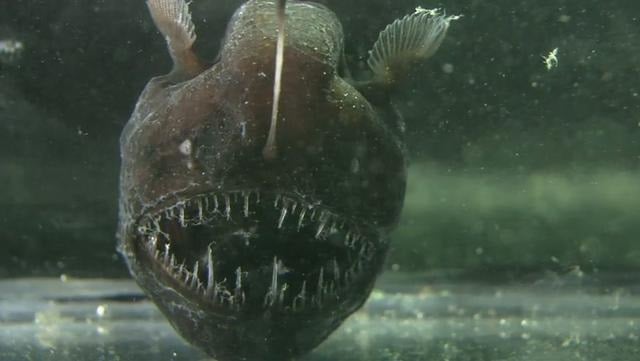
63. Humpback Anglerfish
Latin Name:Melanocetus johnsonii
Habitat:Bathypelagic zone of the open ocean
Size:Length: 2.9 to 18 cm
Diet: Crustaceans, shrimp, other fish, snails
Conservation Status:Least Concern
The horrifying Humpback Anglerfish (a.k.a. Humpback Blackdevil) is a species from the family Melanocetidae, or Black Seadevils.
Found at depths of 5,000-15,000 feet, they're 7 inches long, globular, and black as pitch, with a cavernous mouth filled with huge, fang-like teeth.
Made famous by a scene in Finding Nemo, these fish are definitely one of the coolest animals in the ocean.
They use a bioluminescent "fishing lure" (known as the illicium) on their heads to attract its unsuspecting prey. All in all, it's a haunting creature we never wish to see in real life!
READ MORE: 40 Fascinating Blue Whale Facts (From Size to Diet to Conservation)
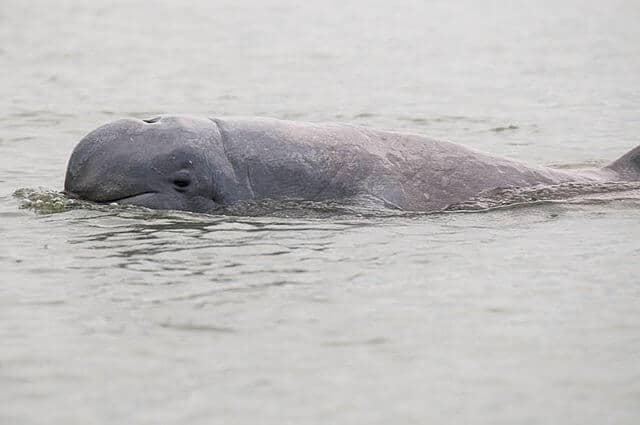
64. Irrawaddy Dolphin
Latin Name:Orcaella brevirostris
Habitat:Shallow, near-shore tropical and subtropical marine waters
Size:Length: 4.8 to 9 feet; Weight: 420 pounds
Diet:Cephalopods, fish, crustaceans
Conservation Status:Endangered, population decreasing
With their formidable foreheads; short, round faces; and broad, rounded flippers, this Southeast Asian species look like some anime artist's cartoonish rendering of a dolphin.
Interestingly, their genetic make-up is closely related to the Killer Whale .
Unlike any other dolphin, the Irrawaddy Dolphin's u-shaped blowhole is placed on the left of the midline and opens towards the front.
Their short beaks are also very different from those of other dolphins, with 12-19 peg-like teeth on each side of their jaws.
READ MORE: How To Grade Captive Dolphin Facilities

65. Japanese Spider Crabs
Latin Name:Macrocheira kaempferi
Habitat:Temperate waters of the Pacific Ocean near Japan
Size:Length: Up to 18 feet; Weight: Up to 42 pounds
Diet:Shellfish, dead animals, algae, plants, small fish, mollusks
Conservation Status:Data Deficient
The Japanese name for this species is taka-ashi-gani, which literally translates to "tall legs crab."
These crazy animals– whose legs can span 12 feet in length, weigh up to 42 pounds, and crawl along the ocean floor like a creepy spider– looks like something that might attack Tokyo in the next Godzilla movie.
Orange, with white spots along the legs, these crabs reportedly have a very gentle disposition despite their daunting appearance.
READ MORE: Japan Photos: 15 Pictures from a Dream Come True
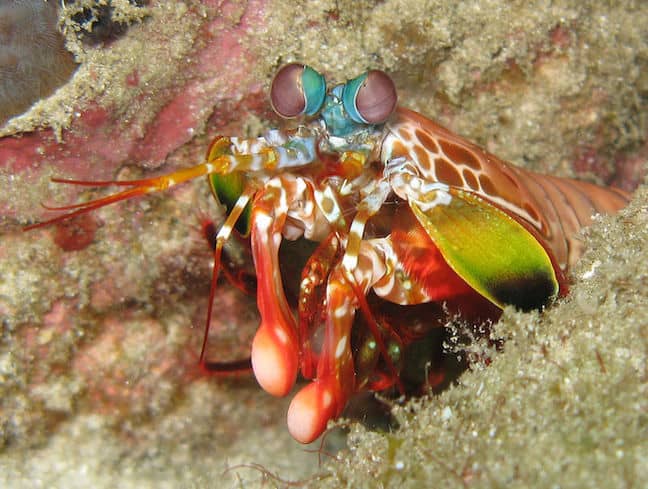
66. Mantis Shrimp
Latin Name:Stomatopoda
Habitat:Shallow or subtropical waters
Size:Length: 3.9 to 18 in
Diet:Fish, crabs, shrimp, worms
Conservation Status:Data Deficient
It may look like a cross between a crayfish, a praying mantis, and a colorful parrot, but the Mantis Shrimp is not to be trifled with.
Its raptorial appendages move so quickly, they literally boil the water around them, producing shockwaves strong enough to kill prey!
Seeing its vivid colors amongst the coral reef last year in Coron, Palawan was one of the most exciting and memorable experiences we've ever had while snorkeling or Scuba diving during our travels.
READ MORE: Ecotourism in Costa Rica
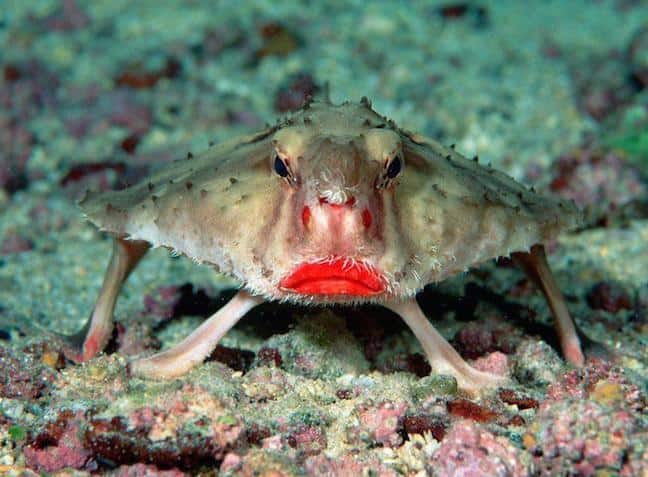
67. Red-Lipped Batfish
Latin Name:Ogcocephalus darwini
Habitat:Deep waters of the Galapagos Islands
Size:Length: 15.7 in
Diet: Mollusks, small fish, crustaceans
Conservation Status:Least Concern
Also known as the Galapagos Batfish, this freaky-faced fish is found in the Galapagos Islands at depths of 10 to 250 feet.
In addition to its red lips, the fish (which is a terrible swimmer) is distinguished by its ability to "walk" on the ocean floor using its pectoral fins.
Once they reach maturity, their dorsal fin evolves into a single spine-like projection that they primarily use to lure prey, including crustaceans and other small fish.
The illicium on its head is used for the same purpose.
READ MORE: Galapagos Islands Animals

68. Sea Pen
Latin Name:Pennatulacea
Habitat:Tropical and temperate waters
Size:Length: 2 to 6 feet
Diet:Plankton
Conservation Status:Data Deficient
Easily among the weirdest animals on this list, the colorful Sea Pen appears less like an animal and more like an ancient writing implement.
These unusual looking creatures' quill-like appearance is created by multiple polyps (each of which has eight tentacles) branching out from a single central stalk.
Found in less turbulent waters ranging from 33 to 6,600+ feet, some species can grow over six feet tall, usually positioning themselves in a current that provides a steady supply of plankton.
READ MORE:Hawaiian Mythology (Intro to Hawaiian Gods, Goddesses and Legends)
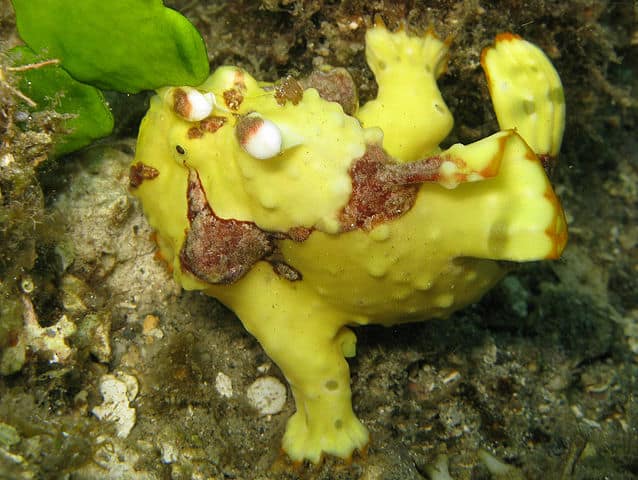
69. Warty Frogfish
Latin Name:Antennarius maculatus
Habitat:Sheltered rocky and coral reefs in the Indo-Pacific region
Size:Length: Up to 5.9 in
Diet:Shrimp, fish
Conservation Status:Data Deficient
Though it's also known as the Clown Frogfish, this globulous, warty wonder is no joke.
Found in the Indo-Pacific region, this voracious carnivore attacks any small animal within its strike range and has a huge mouth that can consume prey its own size.
Females may even eat males after mating if he doesn't move away.
They also have the ability to change colors for camouflage in their environment, which is also aided by their biofluorescence.
READ MORE: Going Green: 60 Earth Day Tips
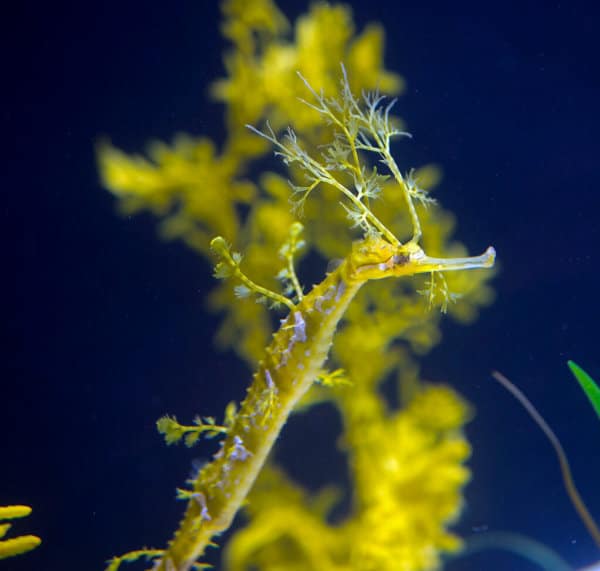
70. Ribboned Seadragon
Latin Name:Phyllopteryx taeniolatus
Habitat:Coastal waters, rocky reefs, seagrass meadows
Size: Length: Up to 12 in
Diet: Small planktonic crustaceans
Conservation Status:Data Deficient
Ribboned Seadragons are not in fact true seadragons, but a member of the pipefish group. They're also known as Pipe Horses and can be found in the Indo-Pacific region.
Their stunning colors vary based on the depth of water they reside in. Those in shallow water are usually a greenish-yellow color, while those found in deeper waters appear more brownish-red.
Their appearance is quite striking, as they have ribbon-like protrusions along their body as well as a long, tubular snout.
They can be distinguished from the Weedy and Leafy Seadragons by their tail, which they use to grab onto sea grass while looking for prey. –by Bret Love, with additional reporting by Christina Maggitas
Source: https://greenglobaltravel.com/weird-animals-around-the-world/
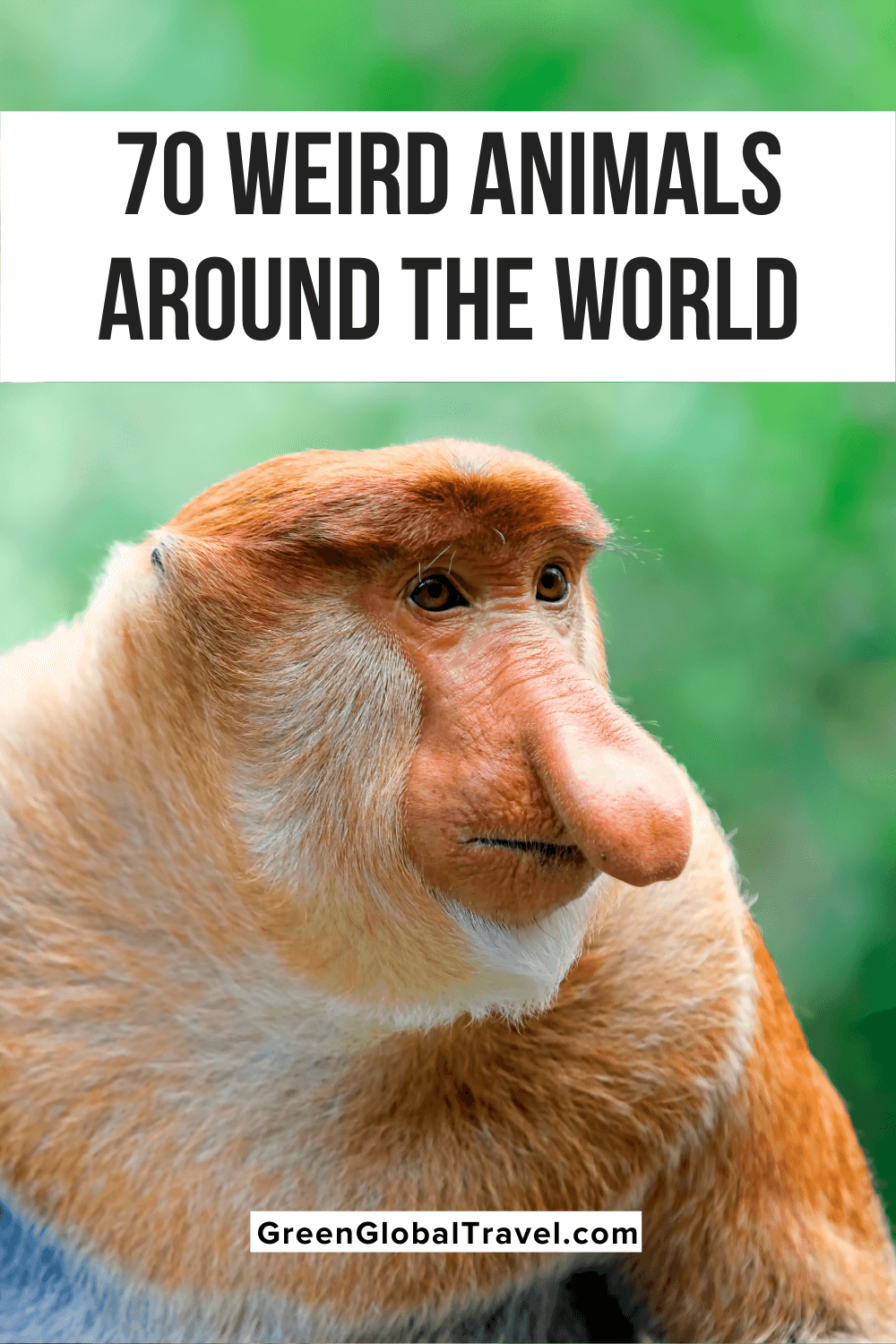
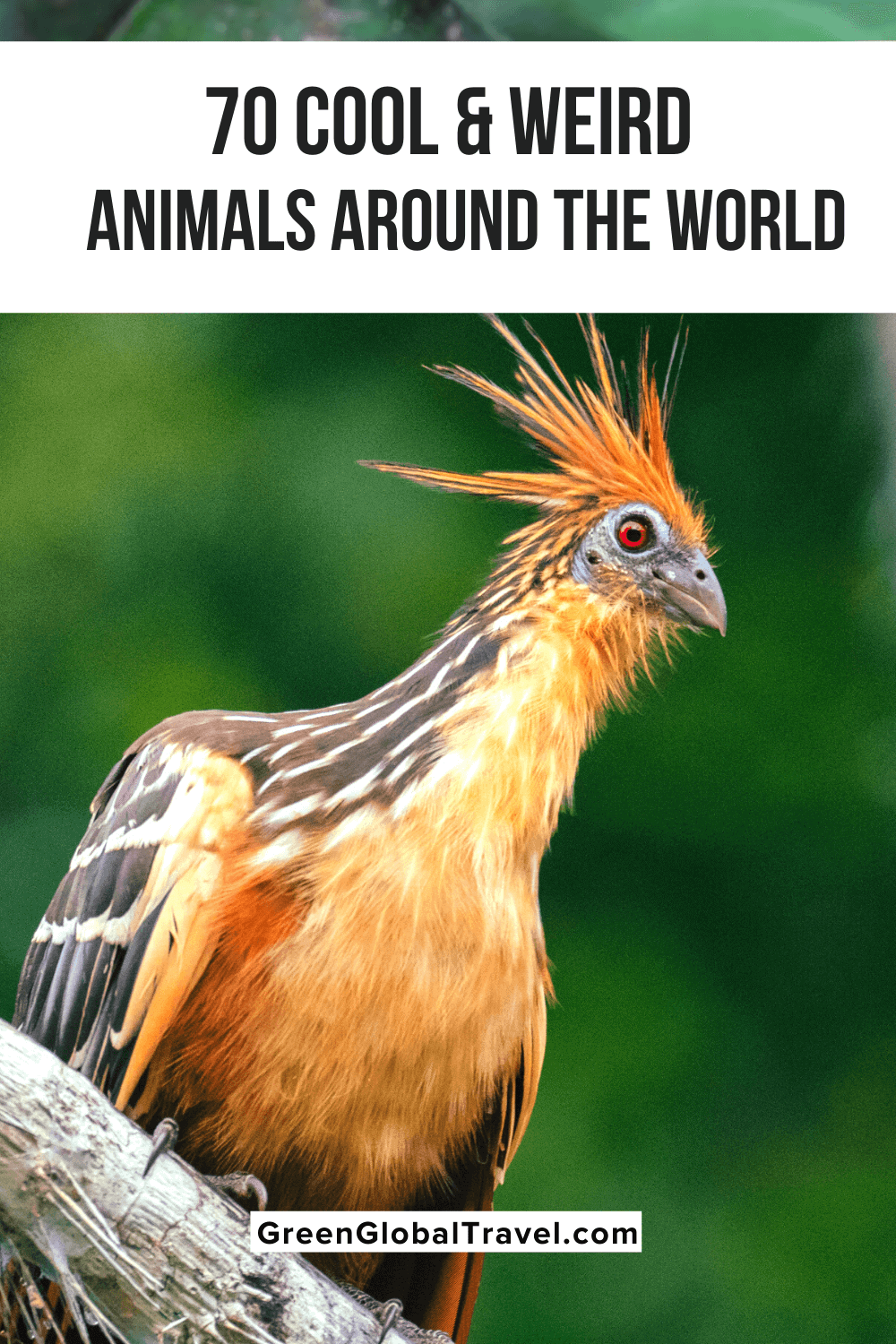
0 Response to "Animals Around the World Funny Names"
Publicar un comentario